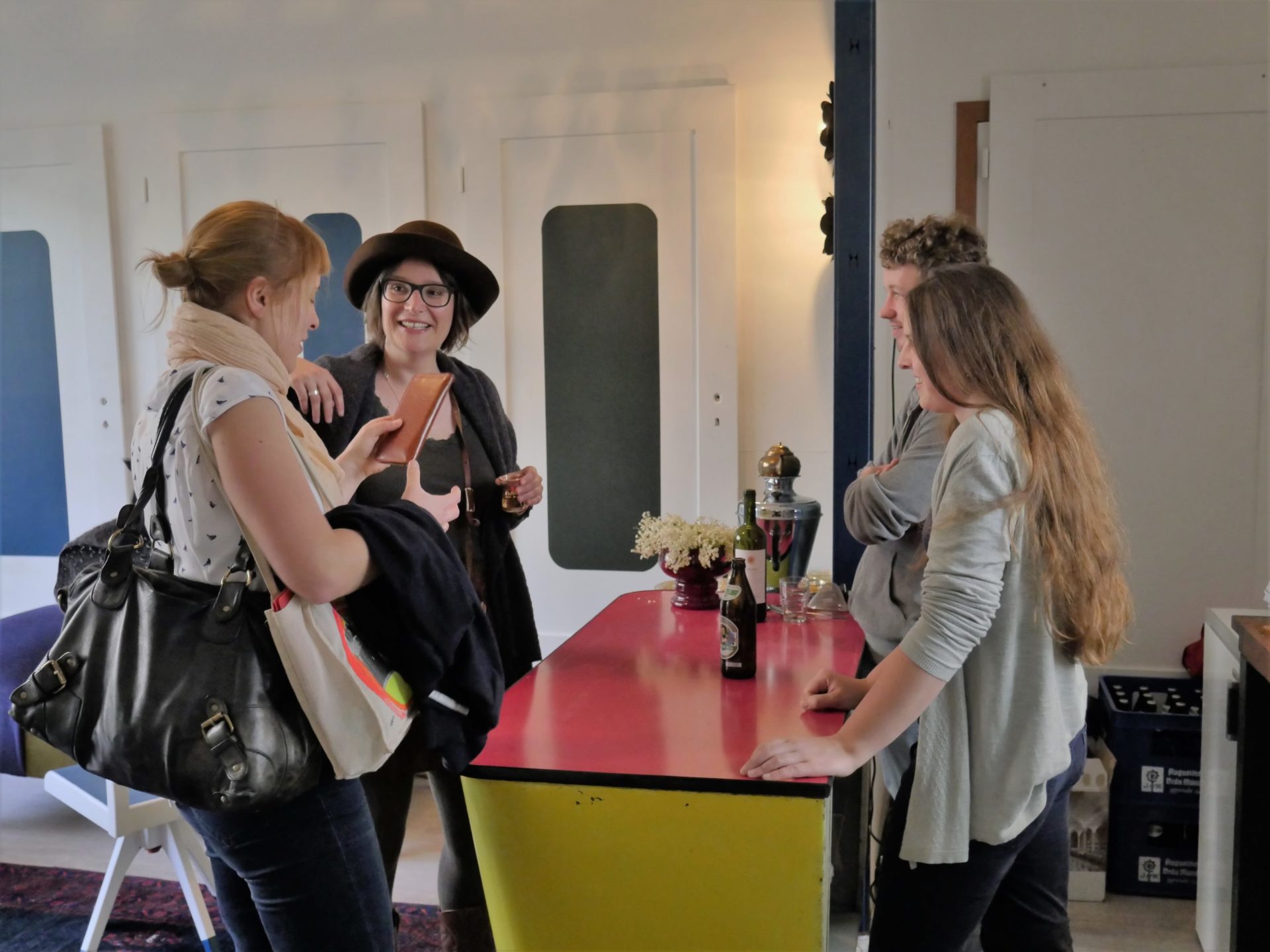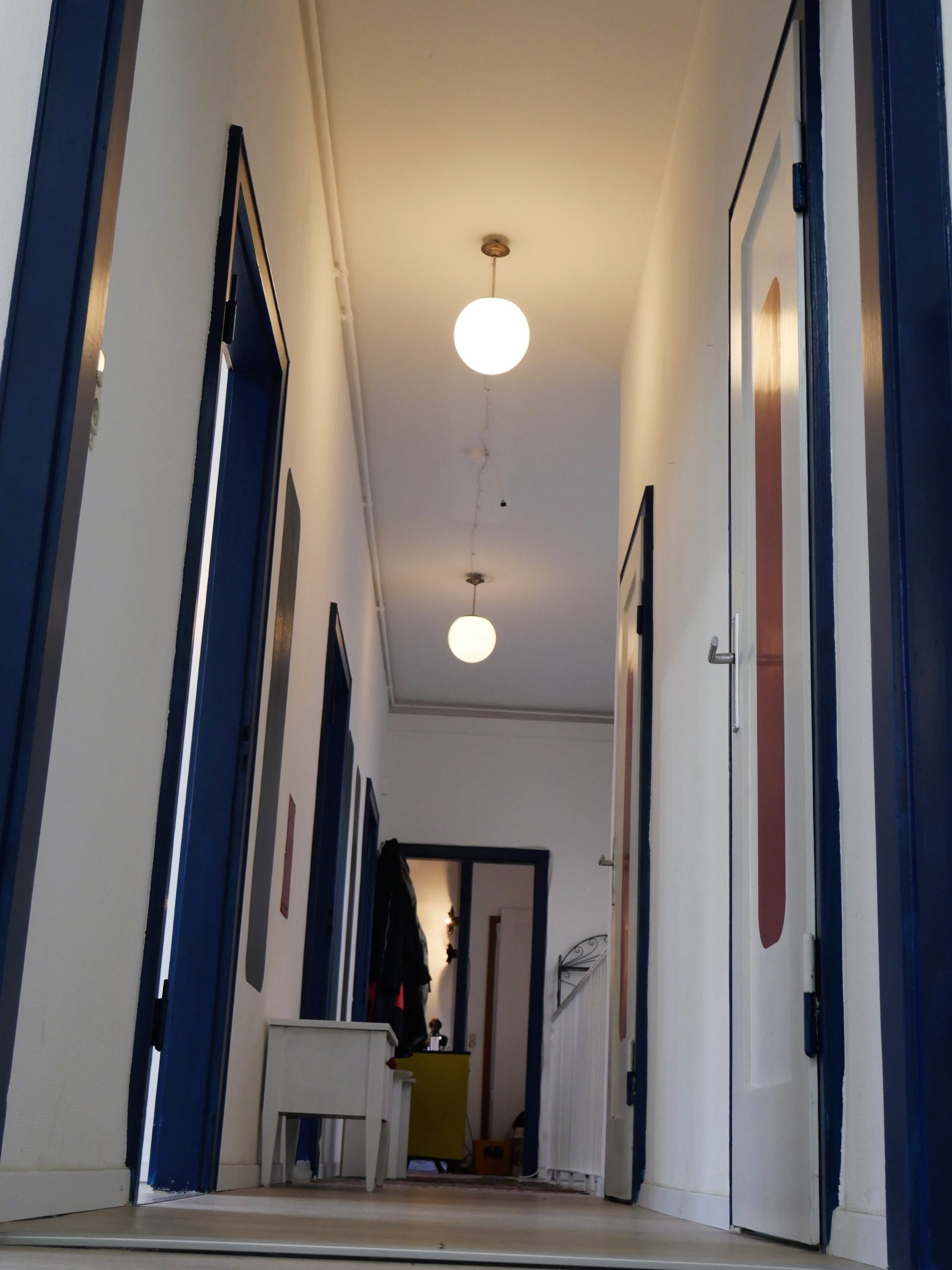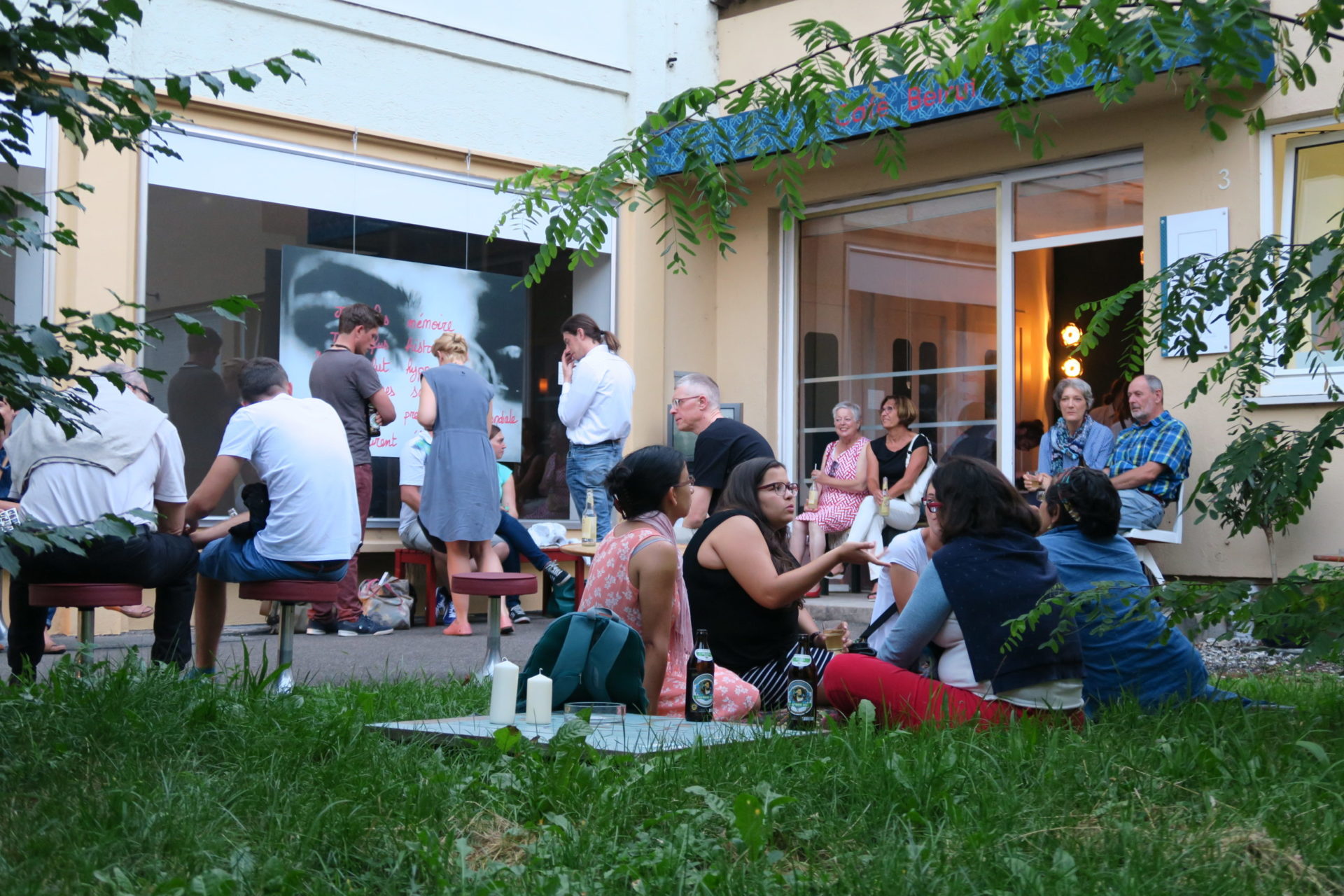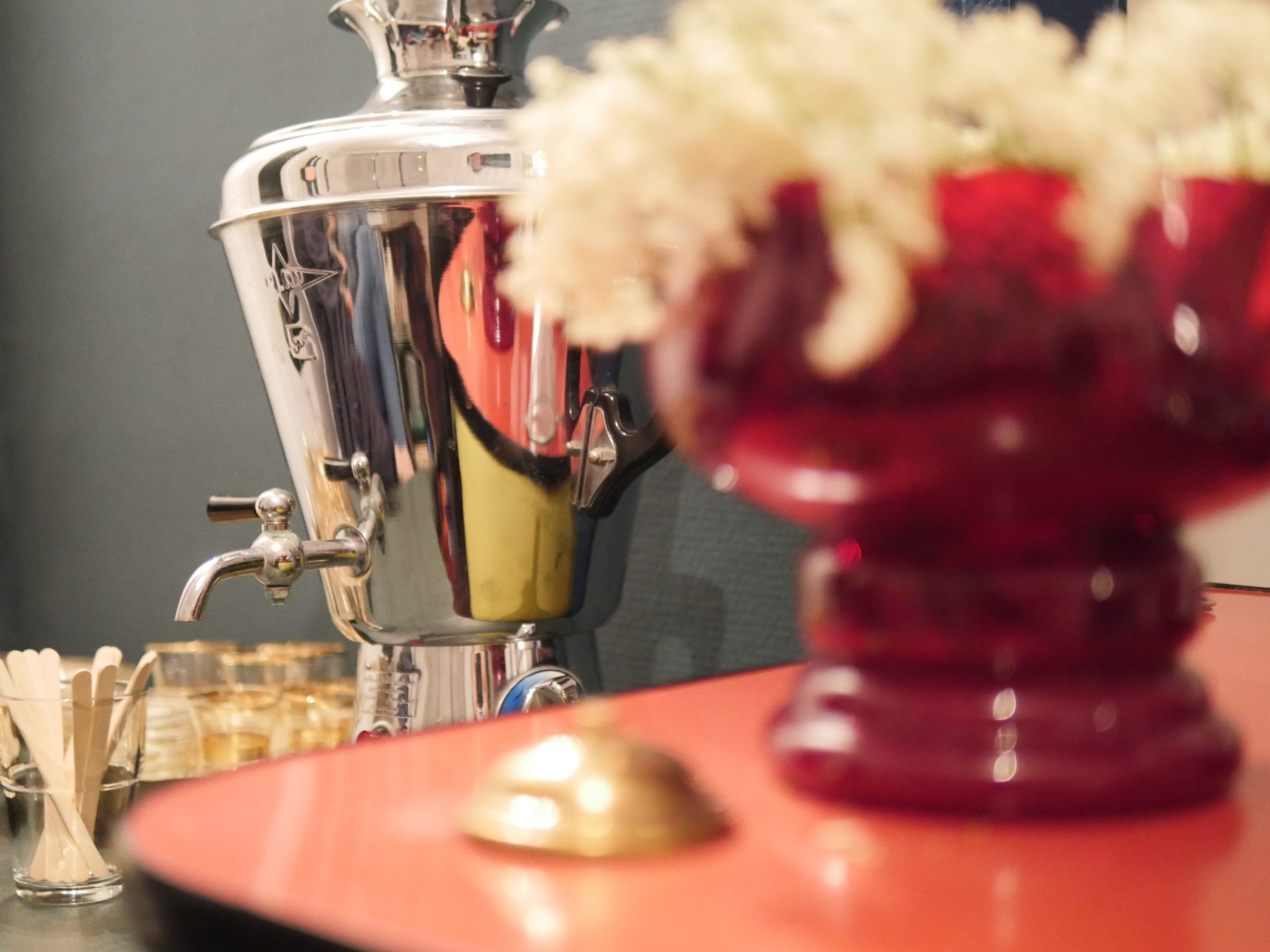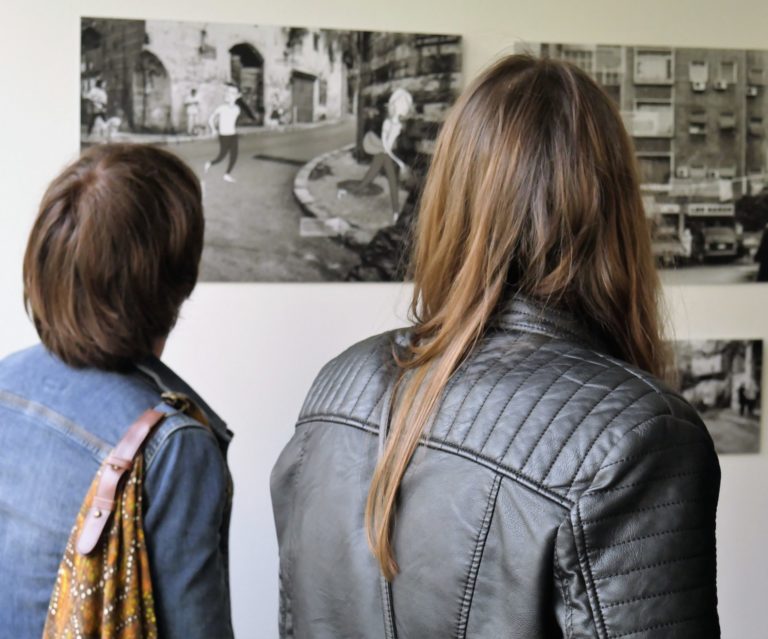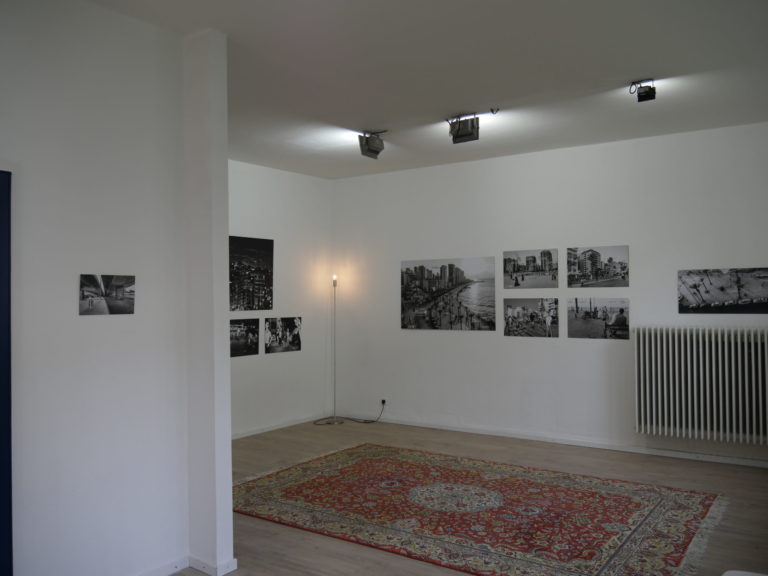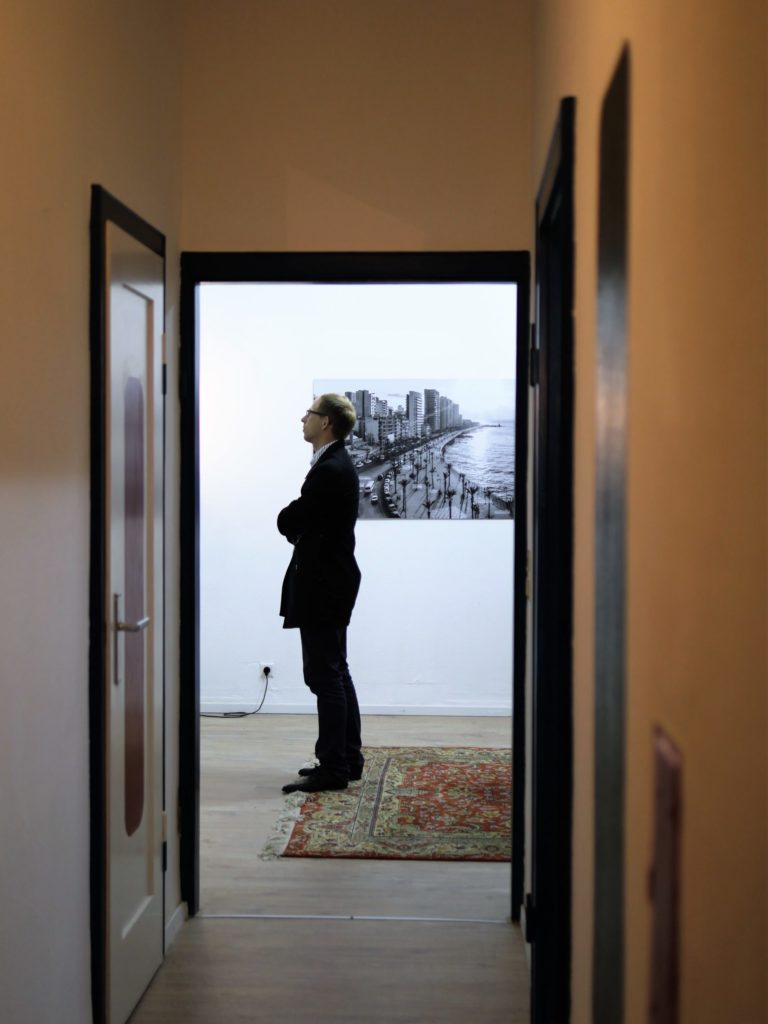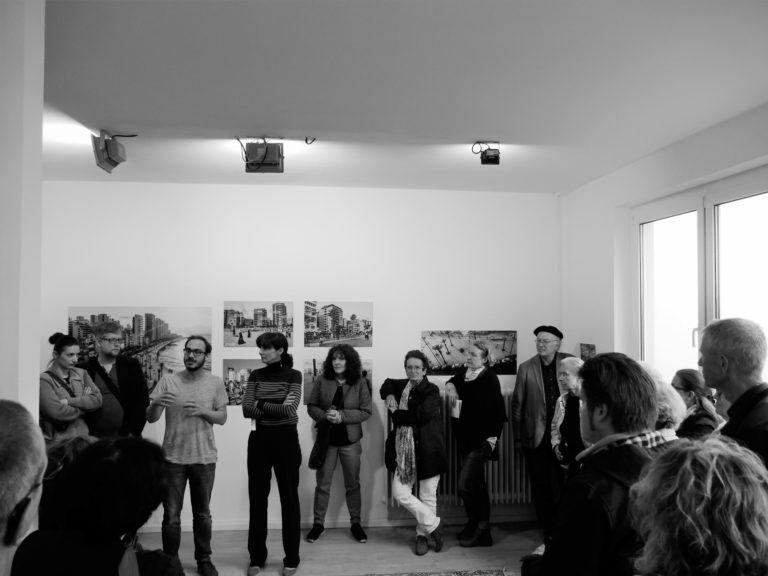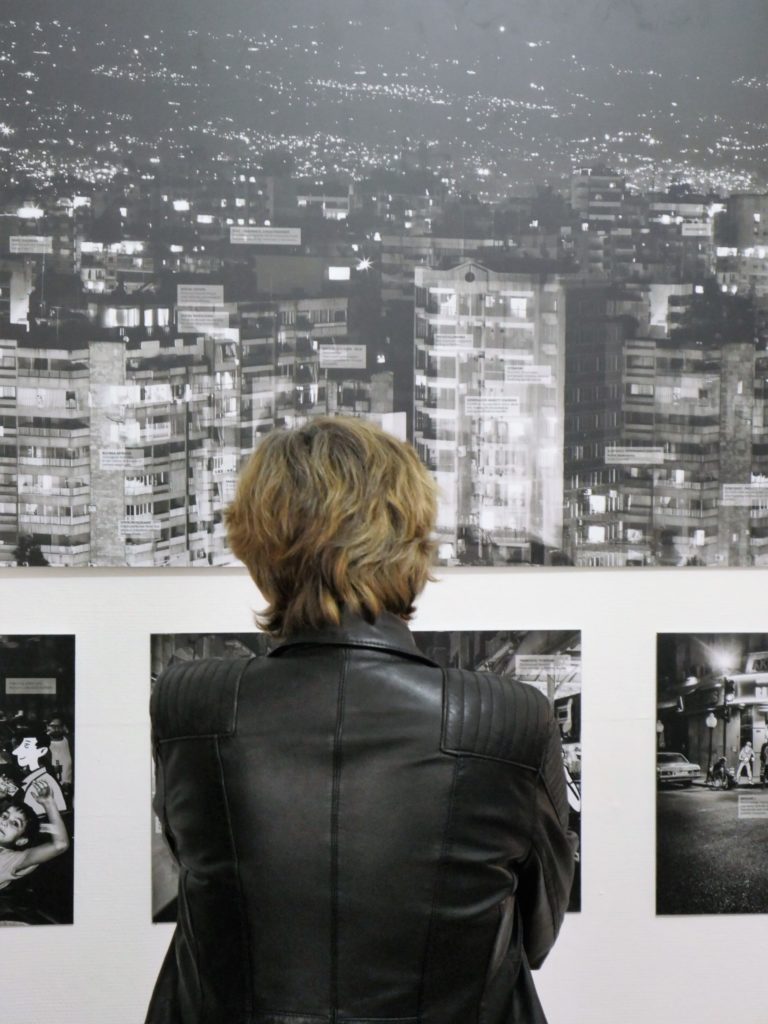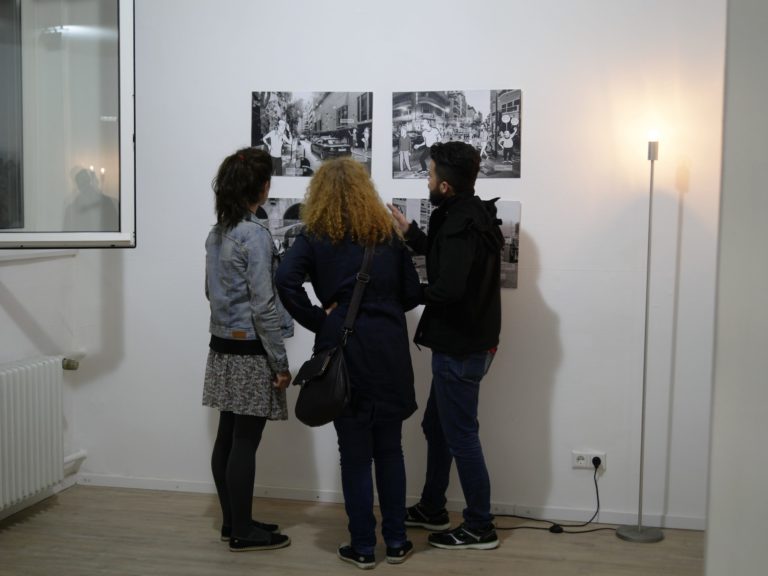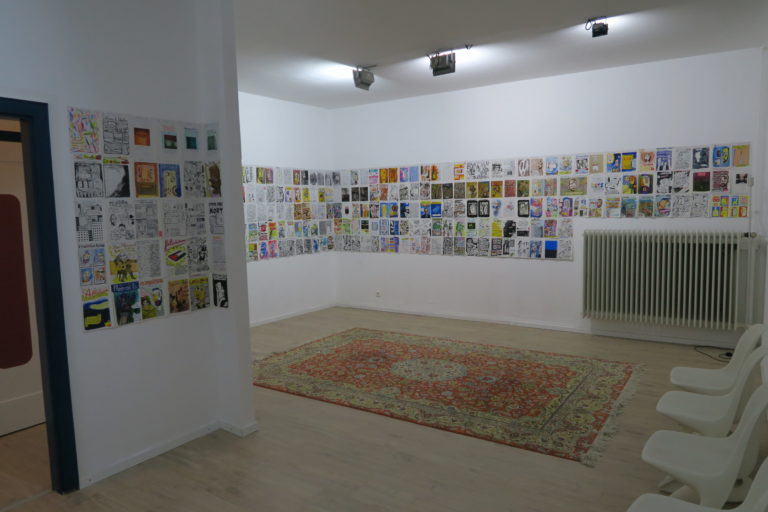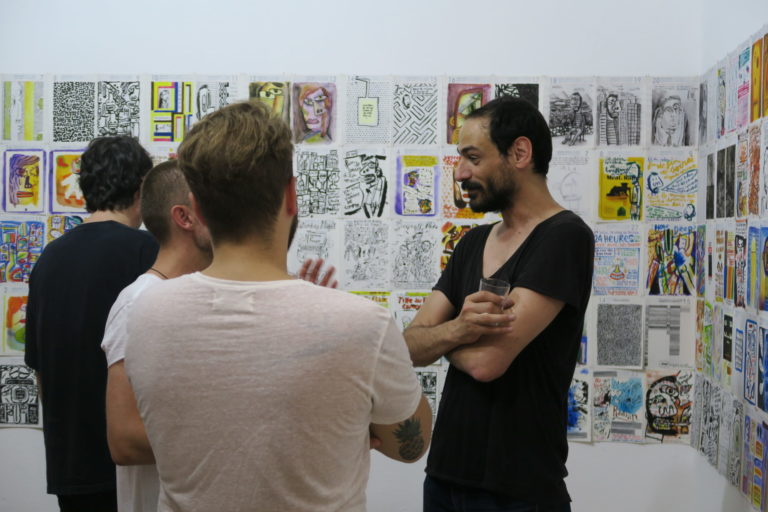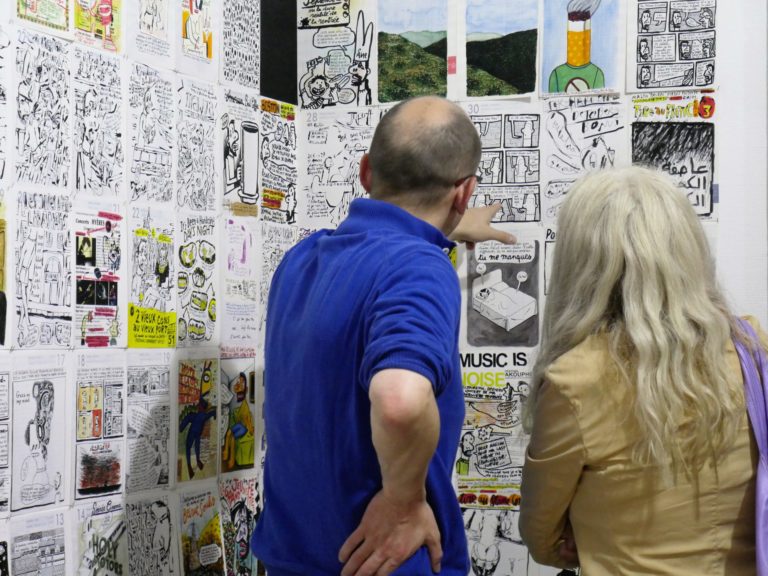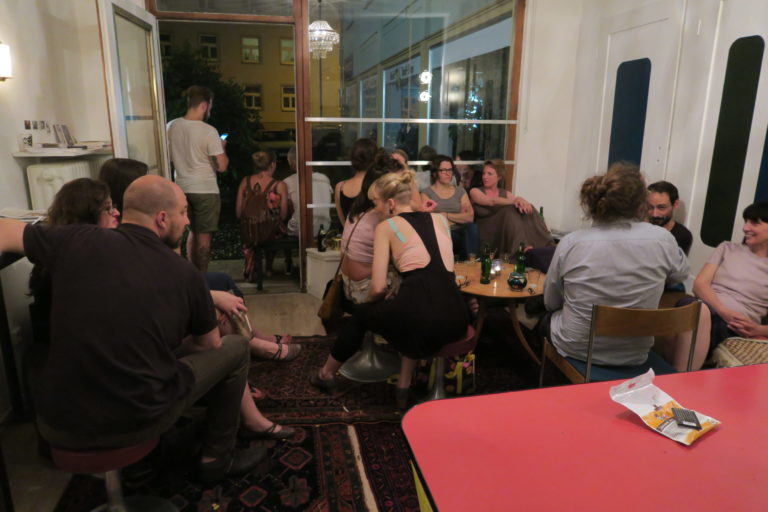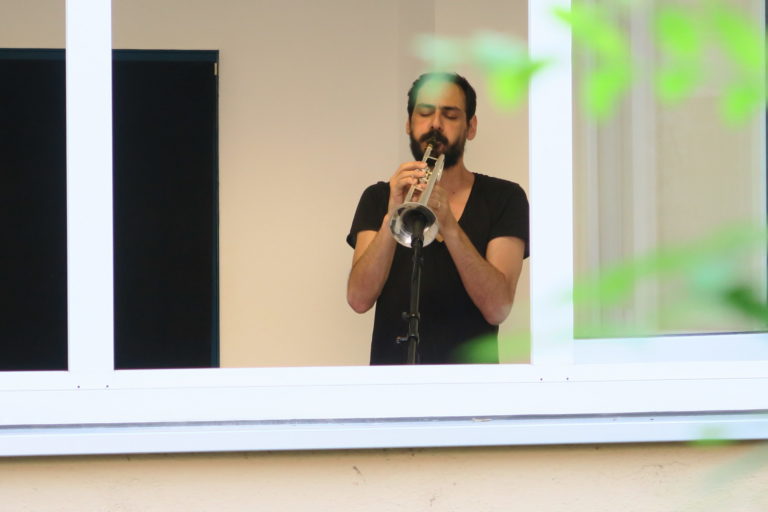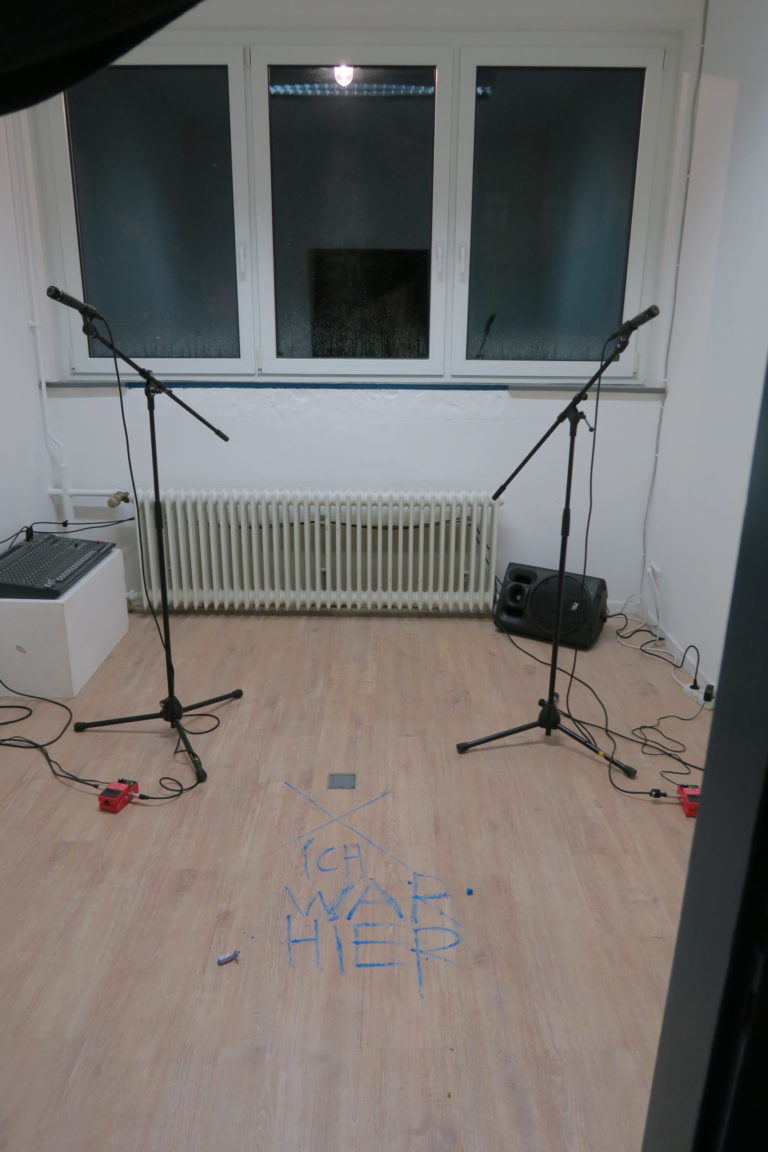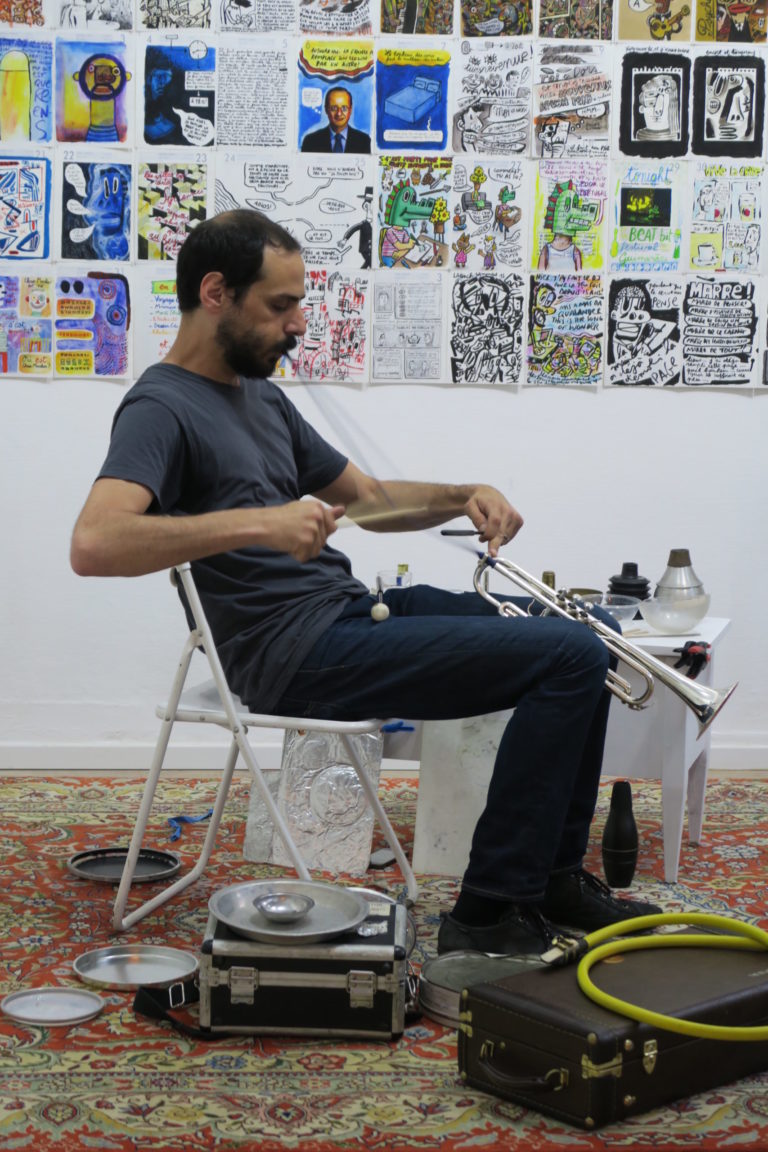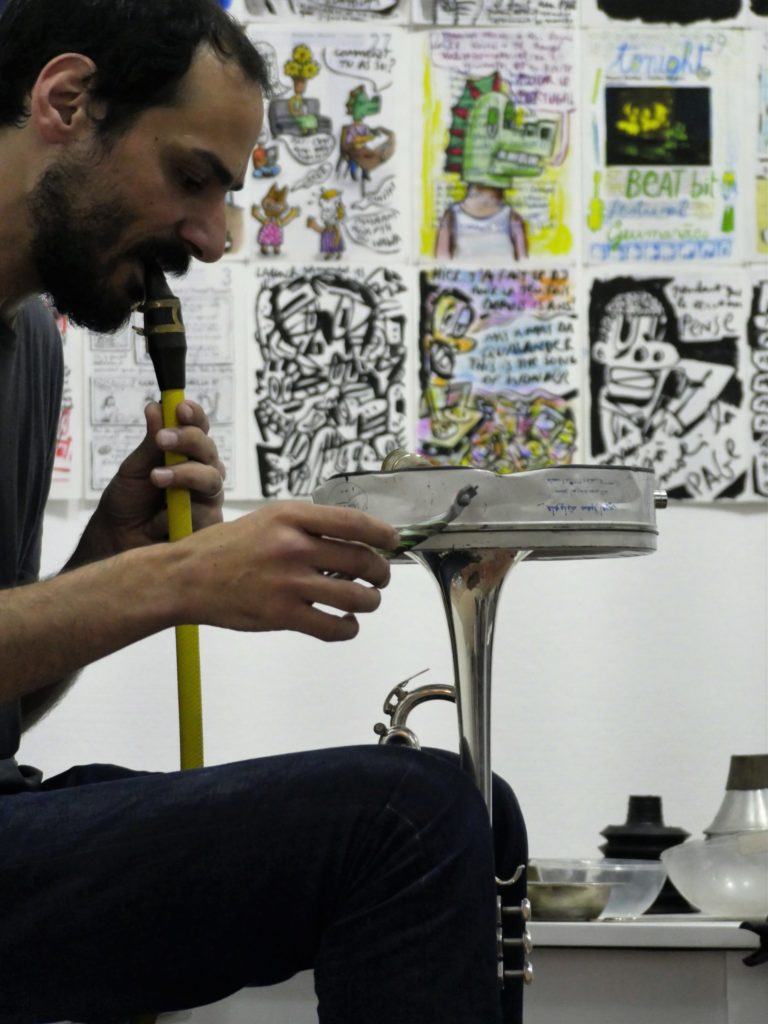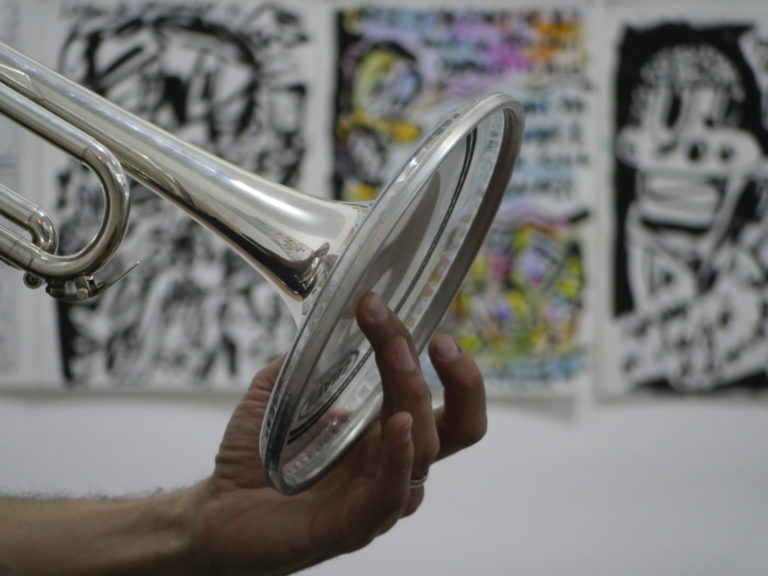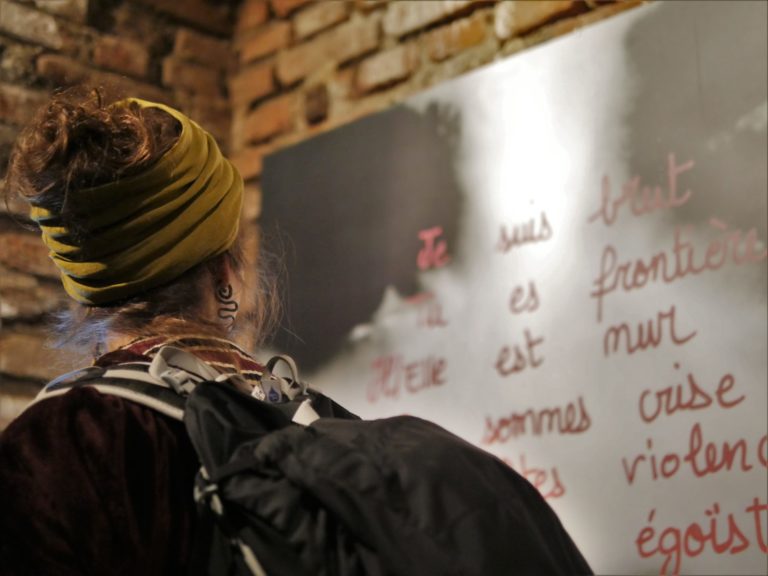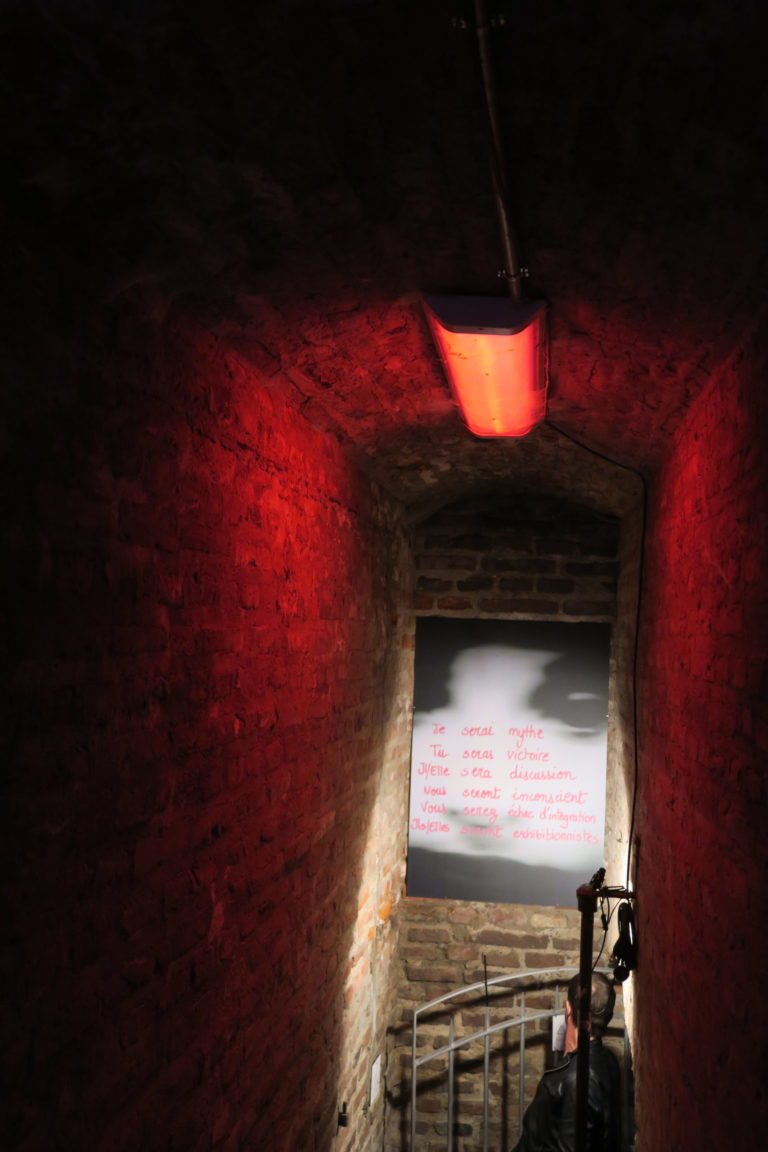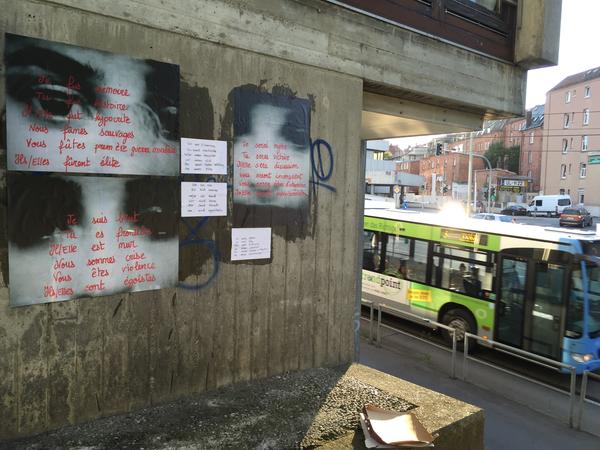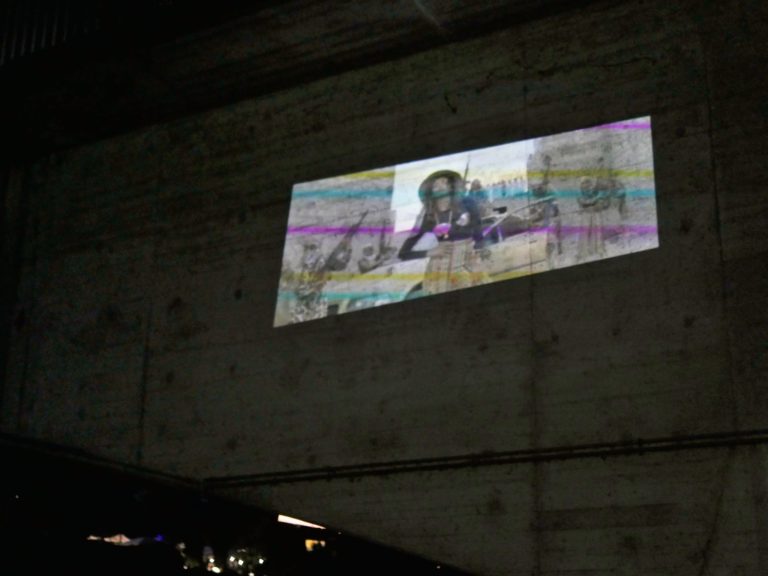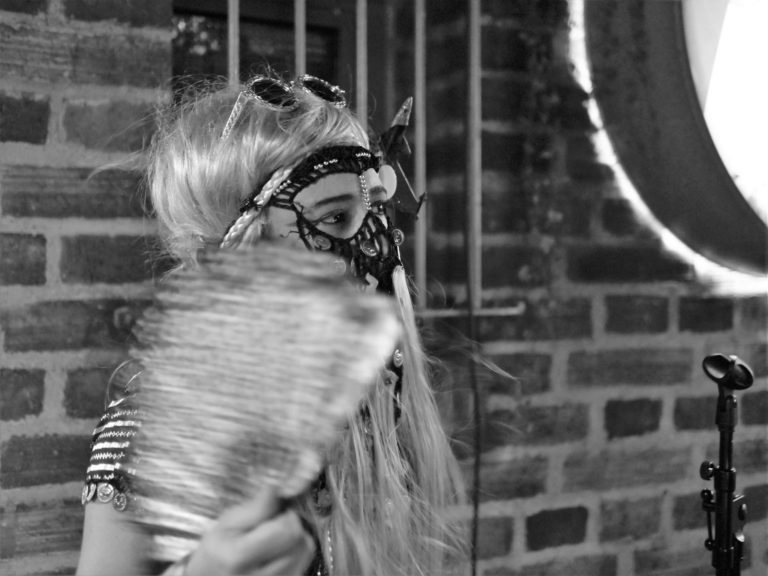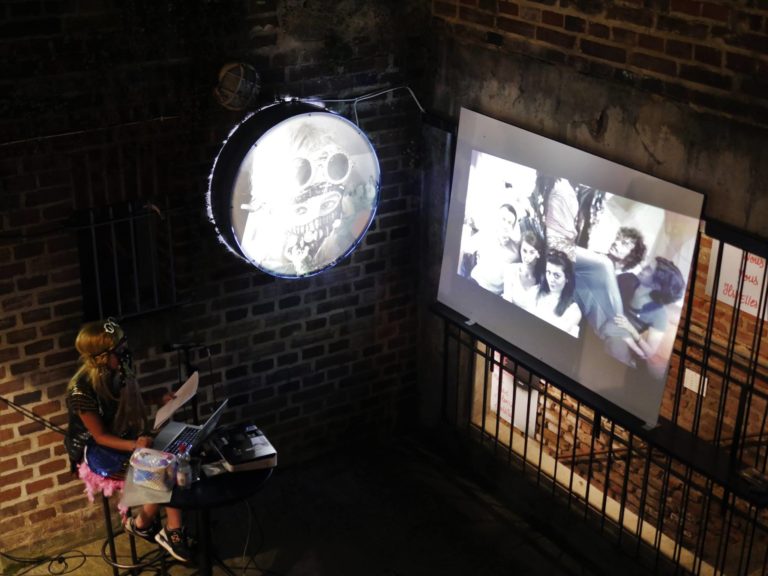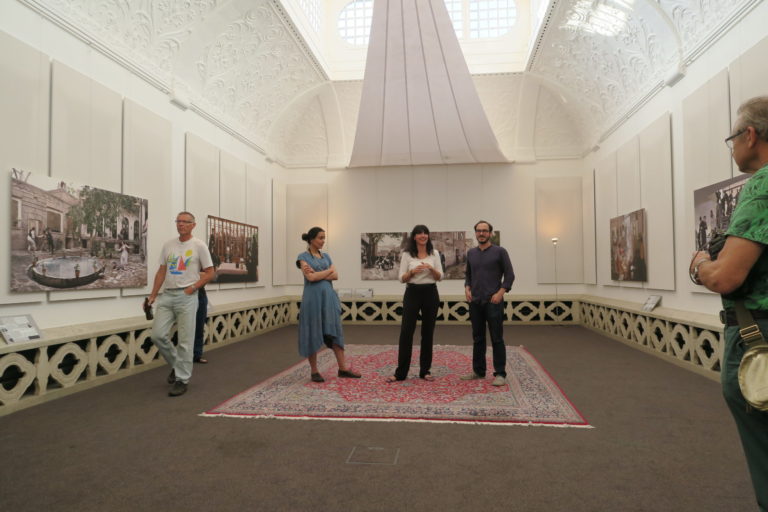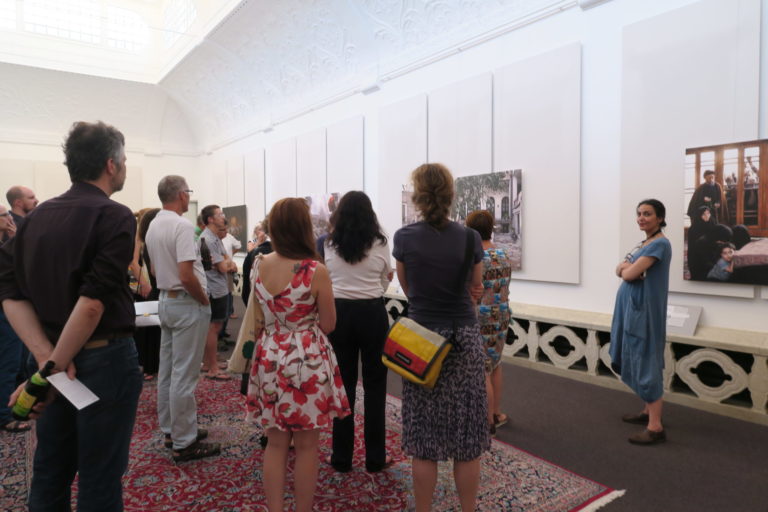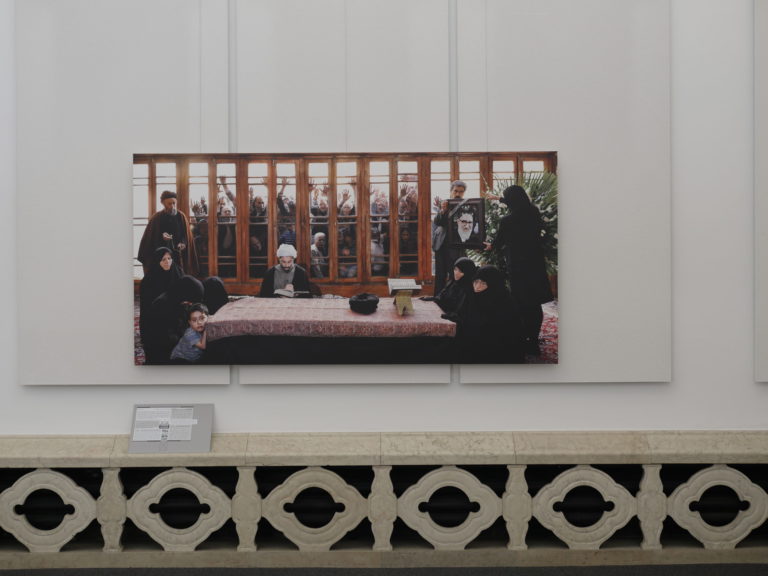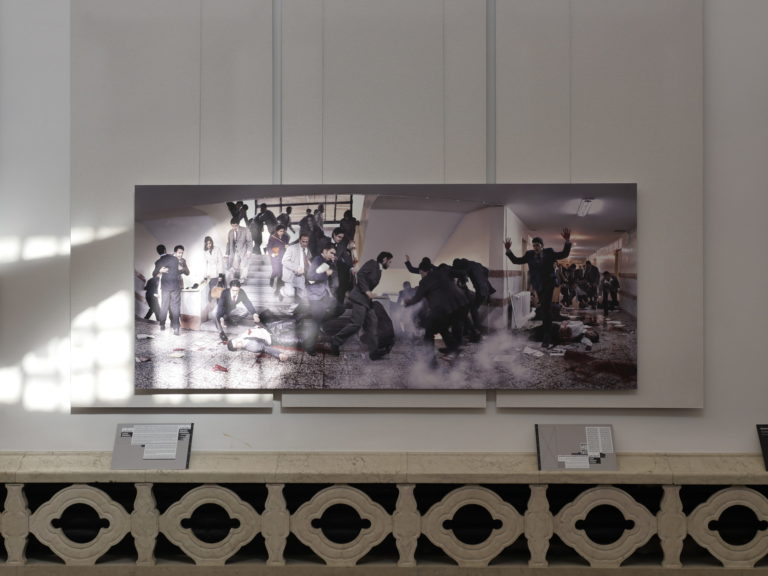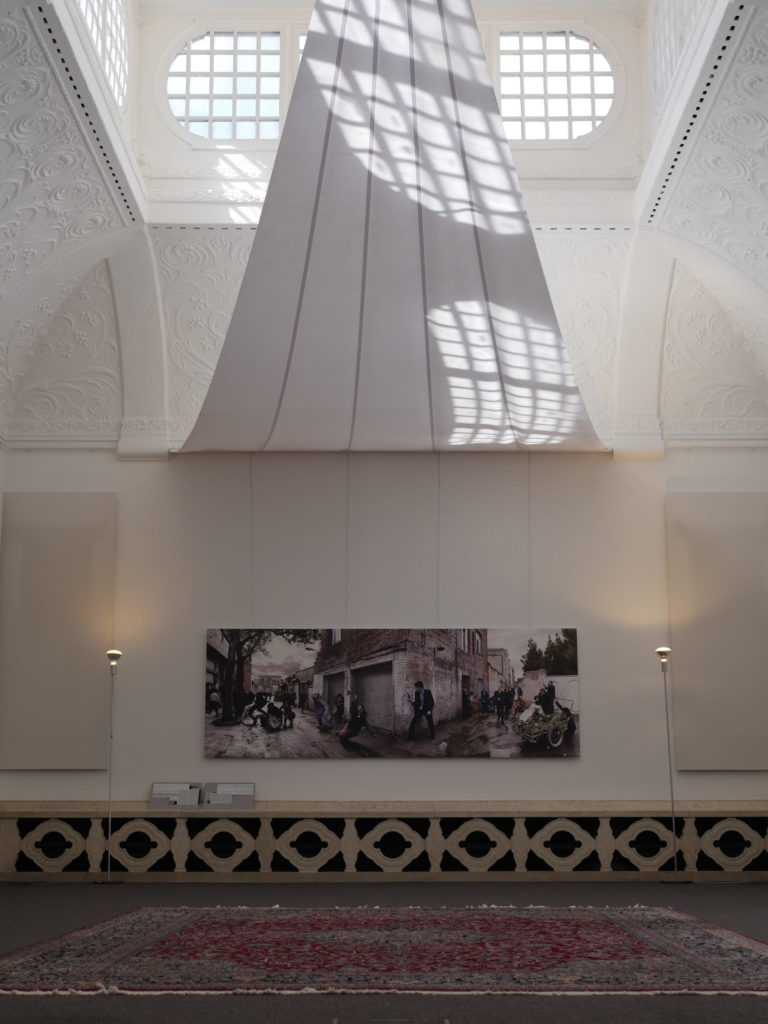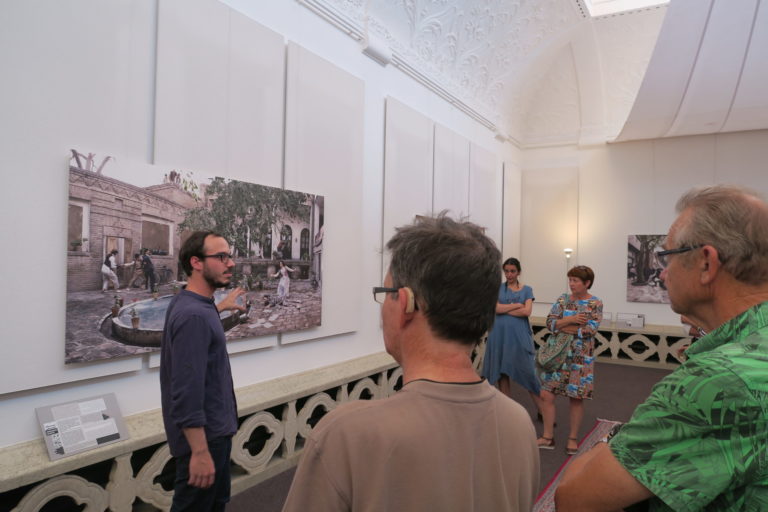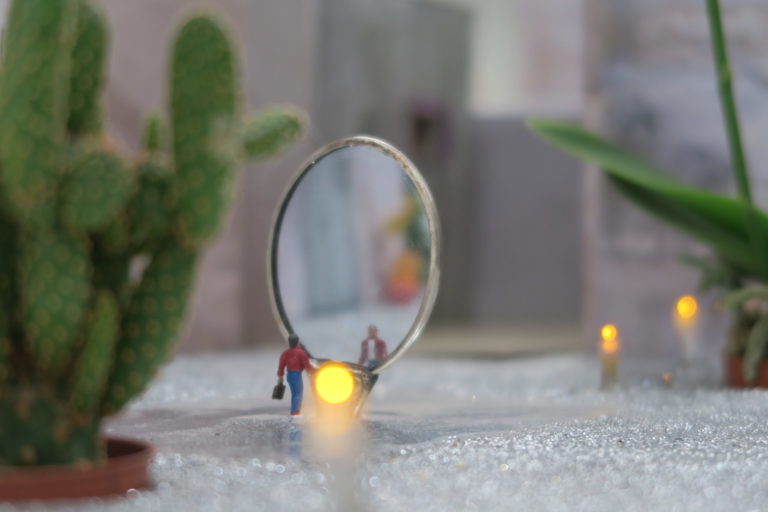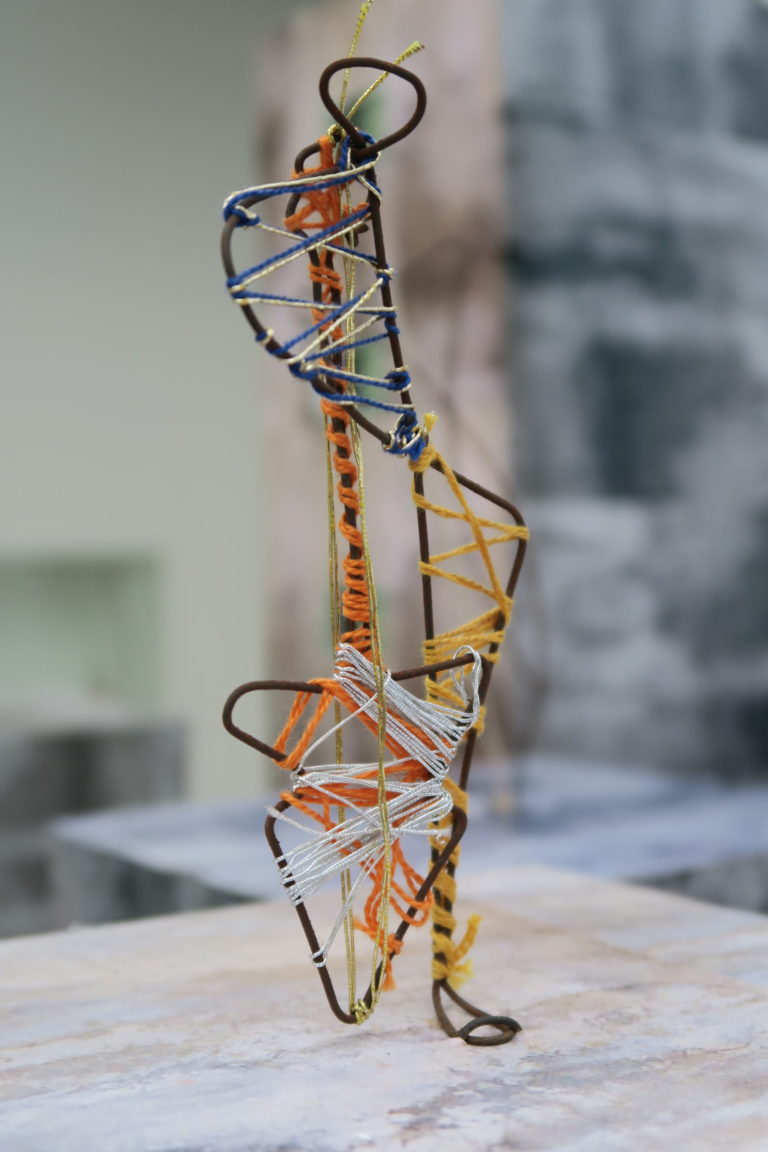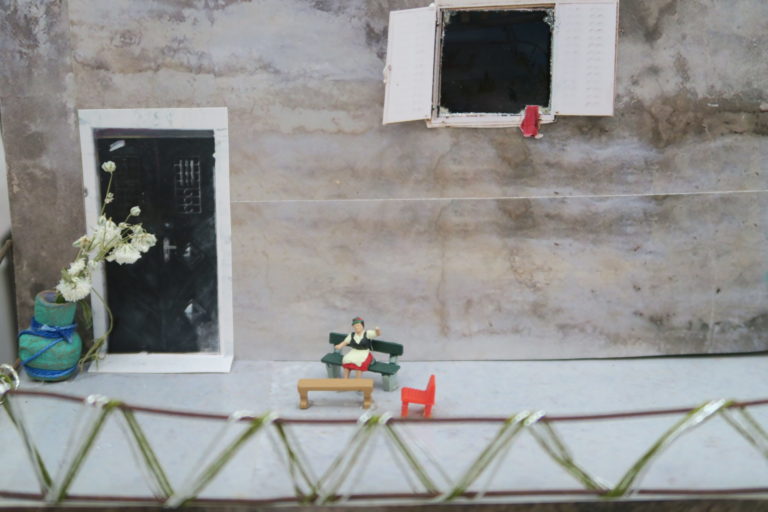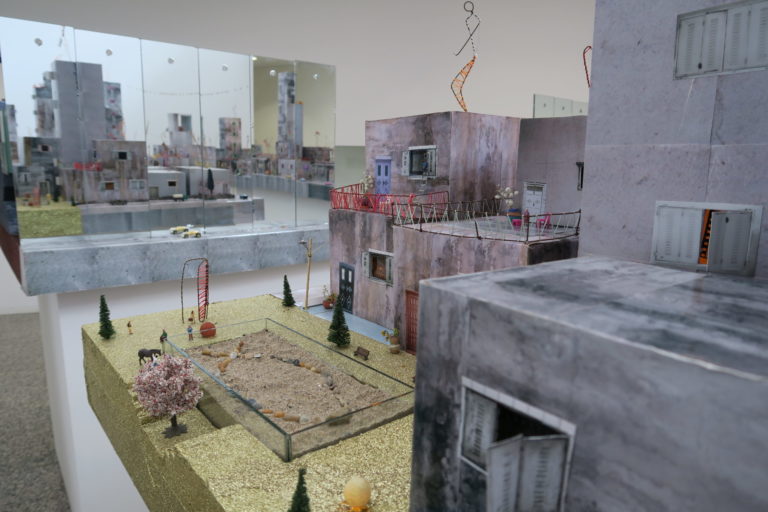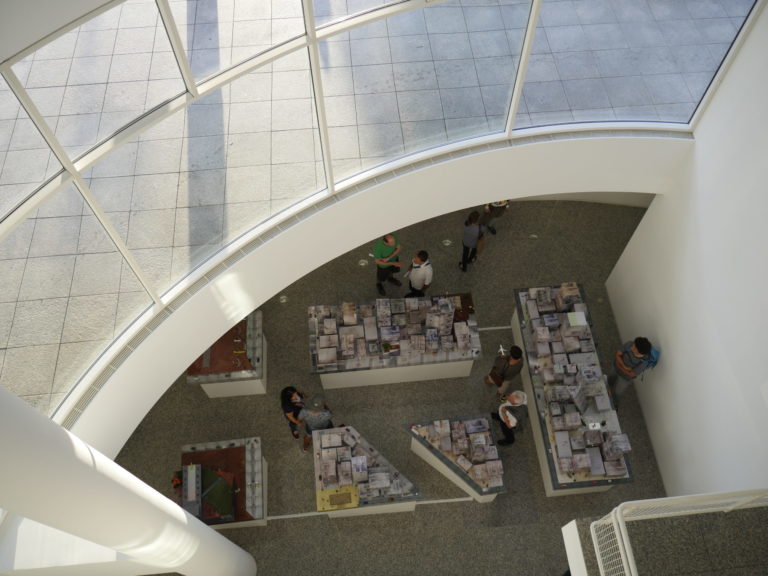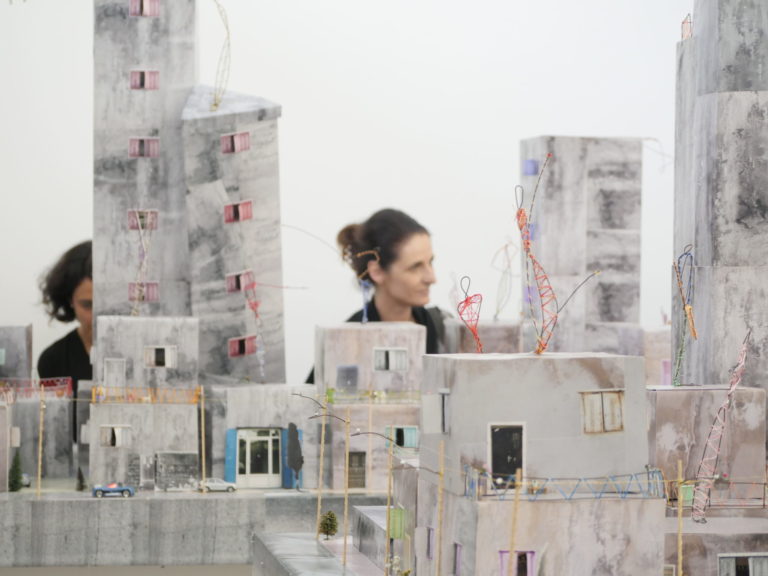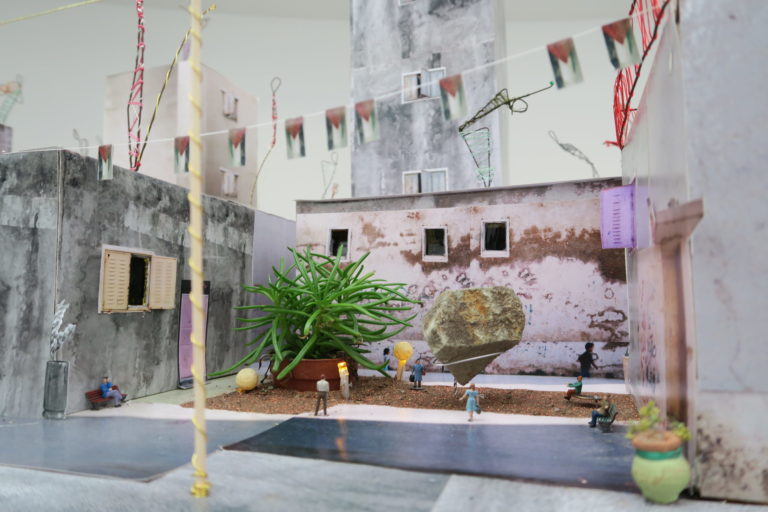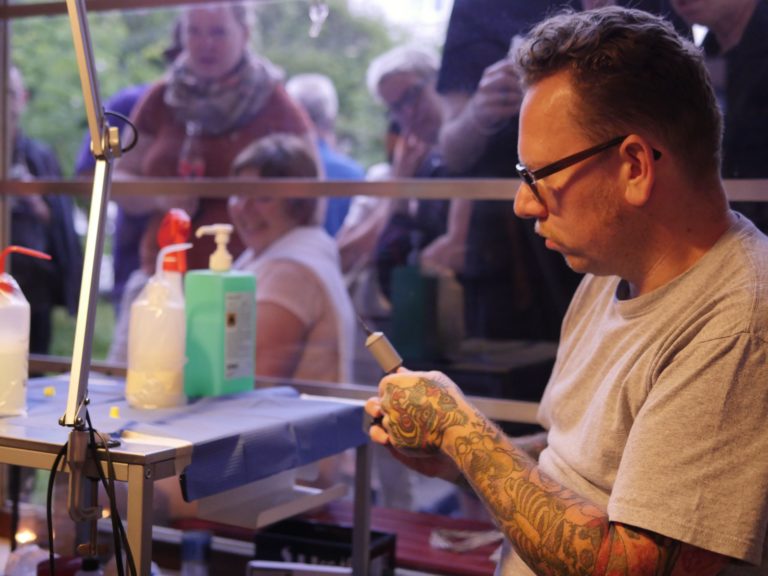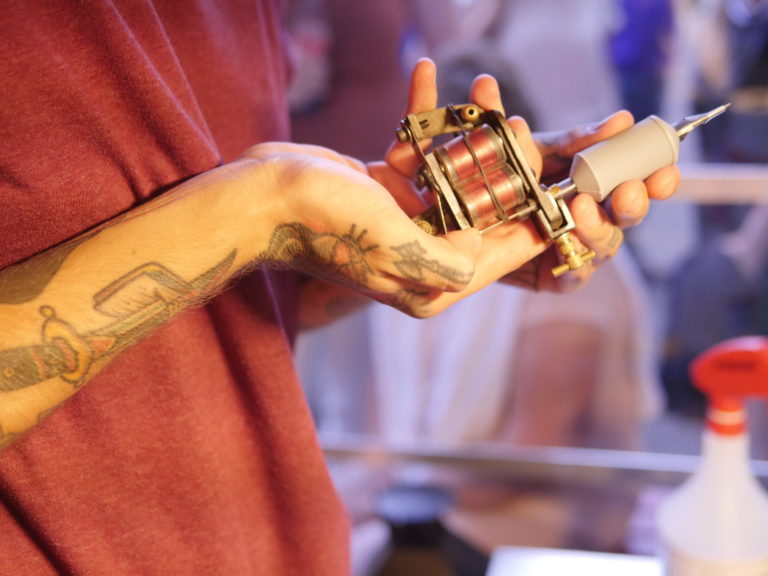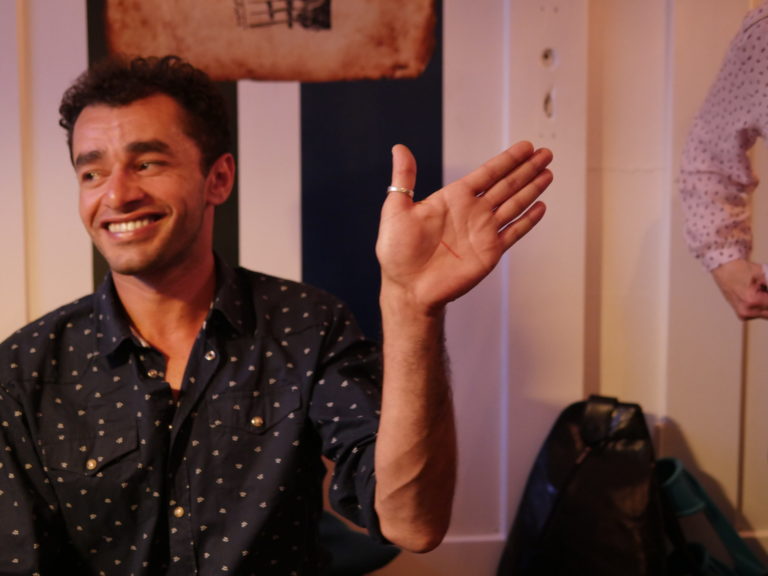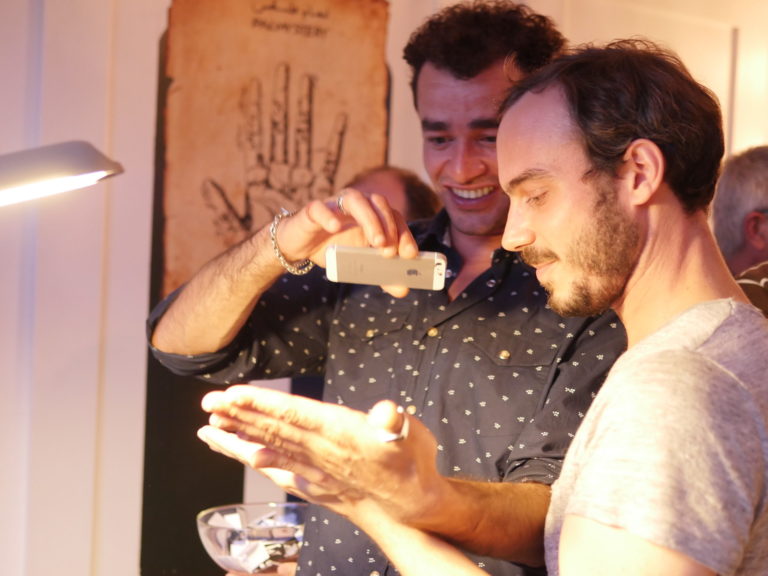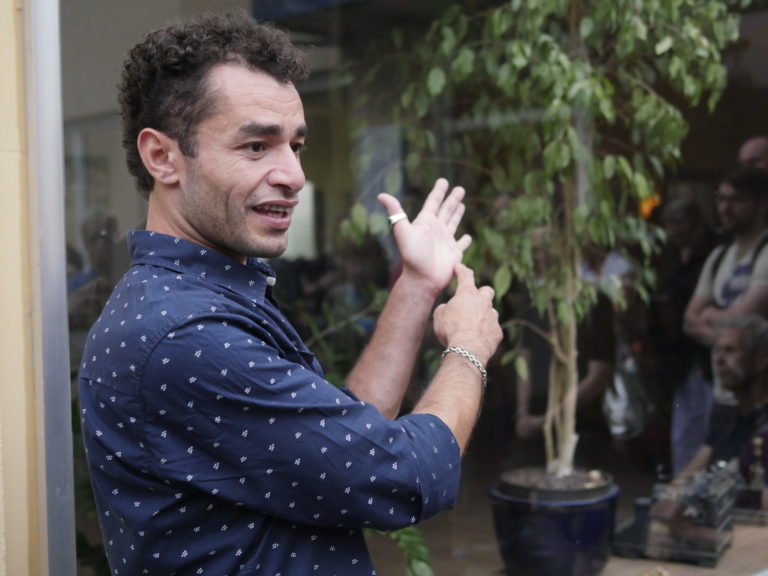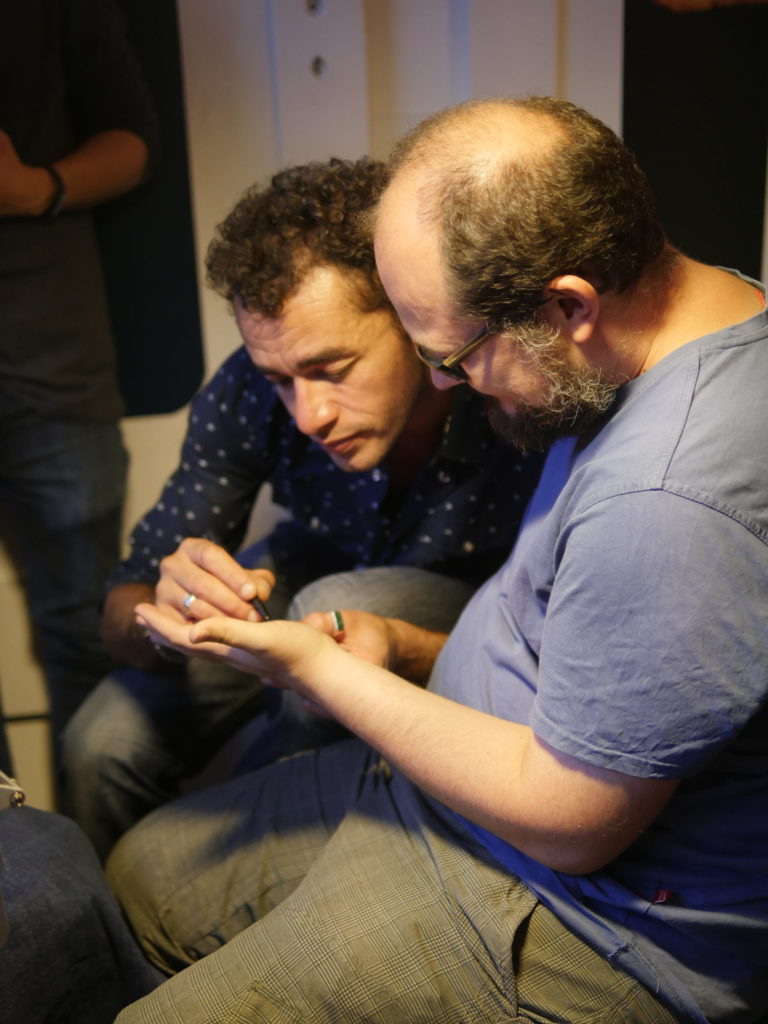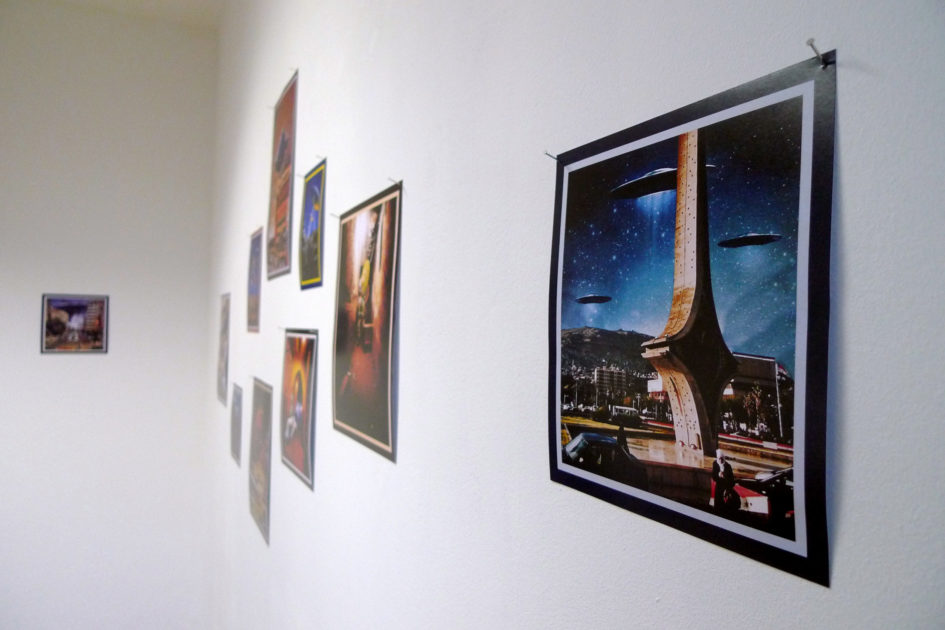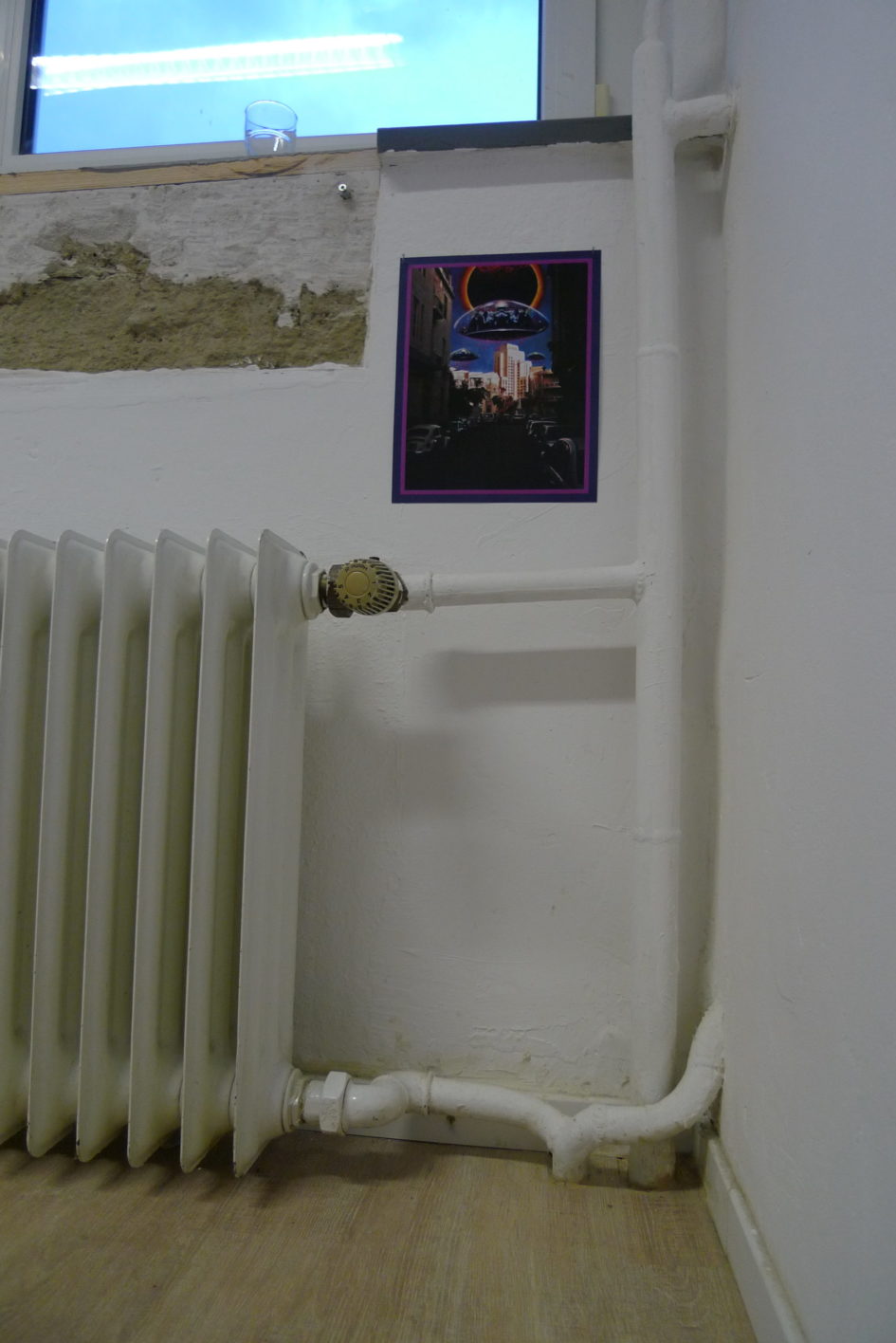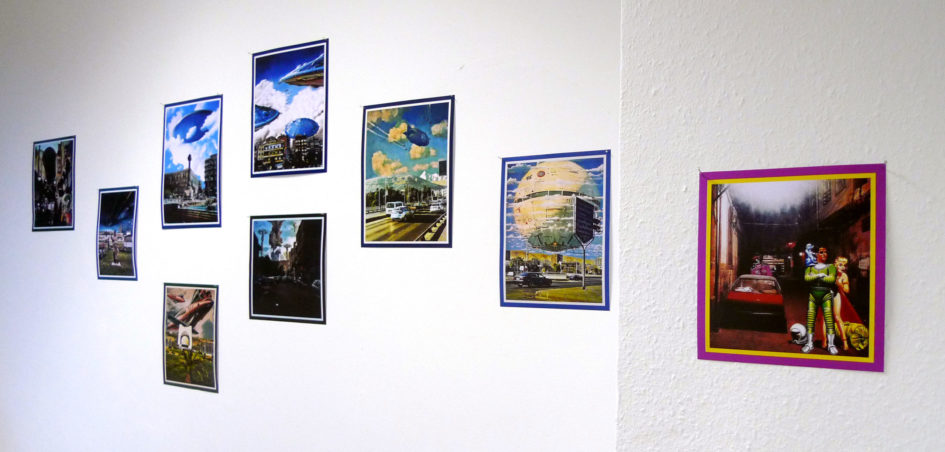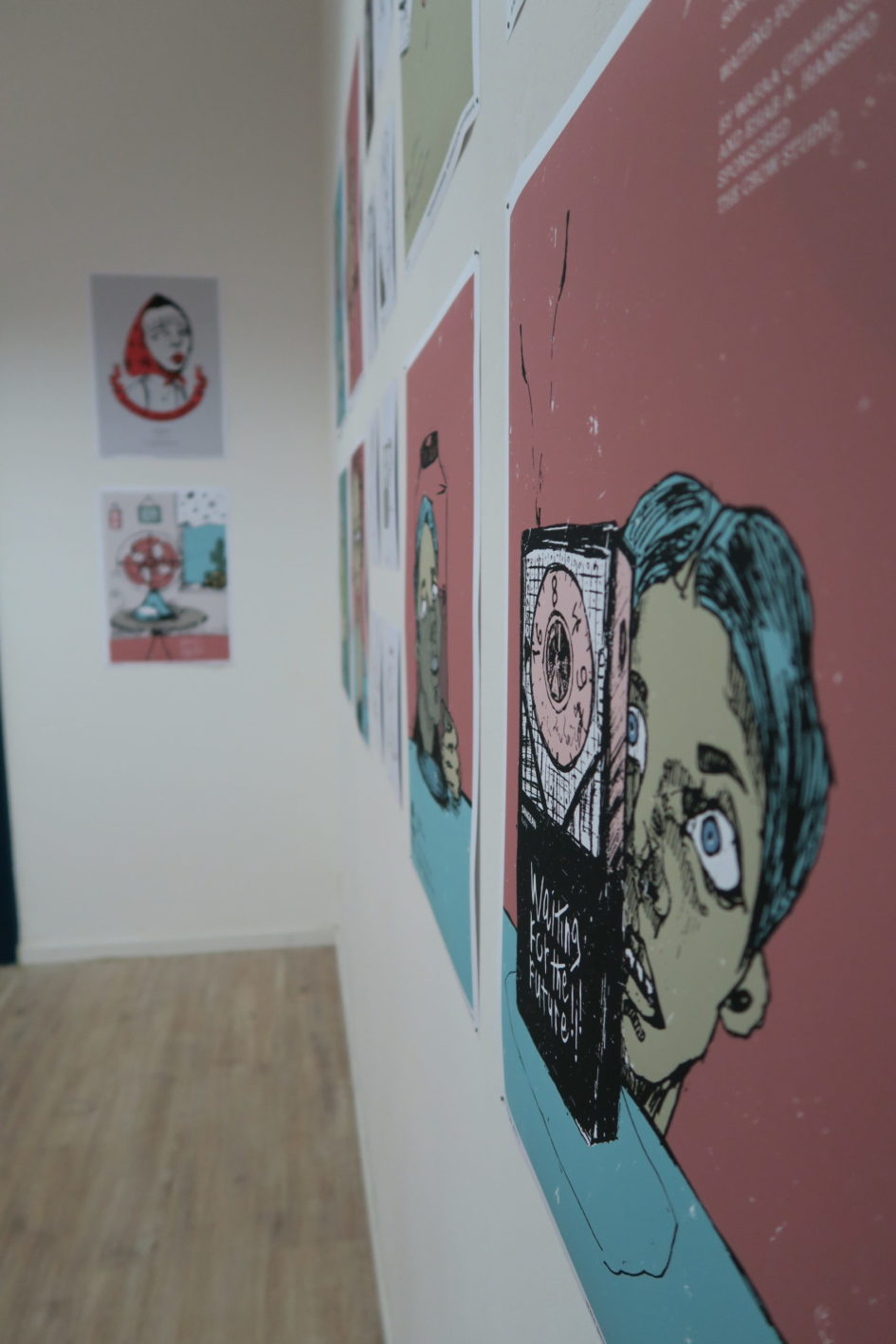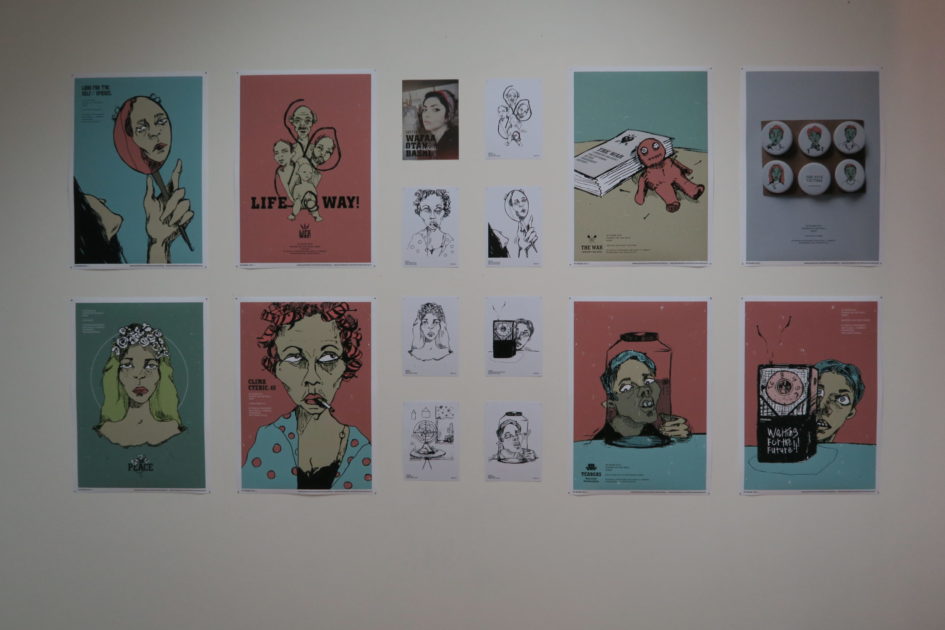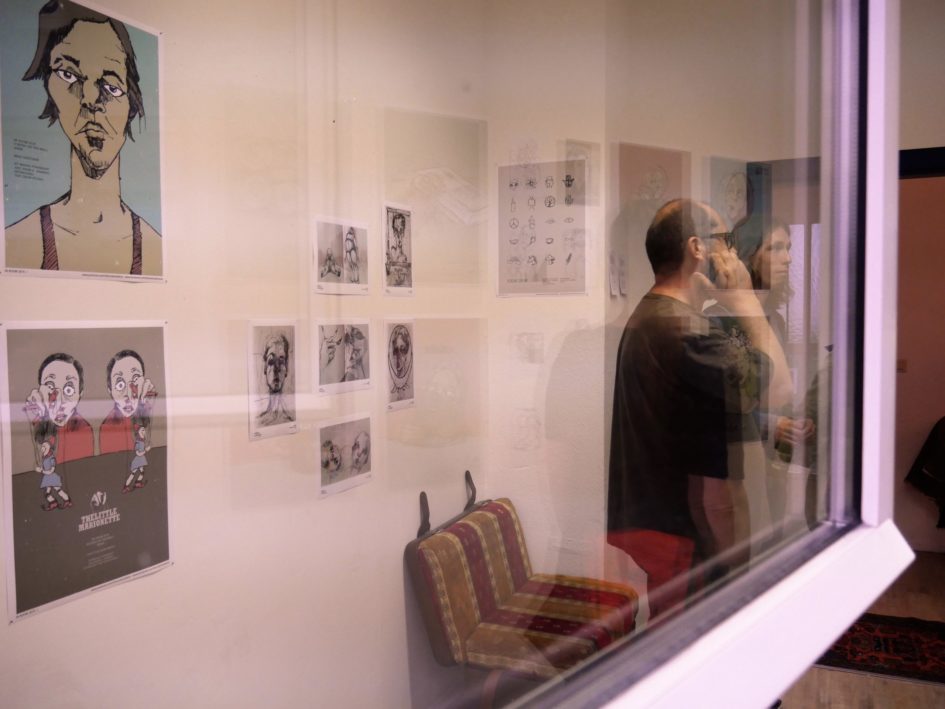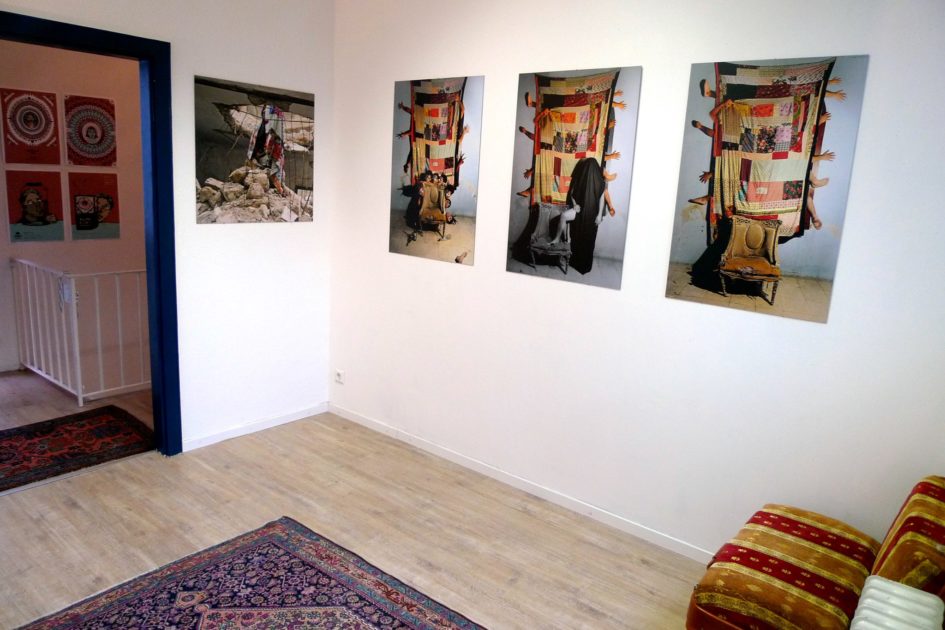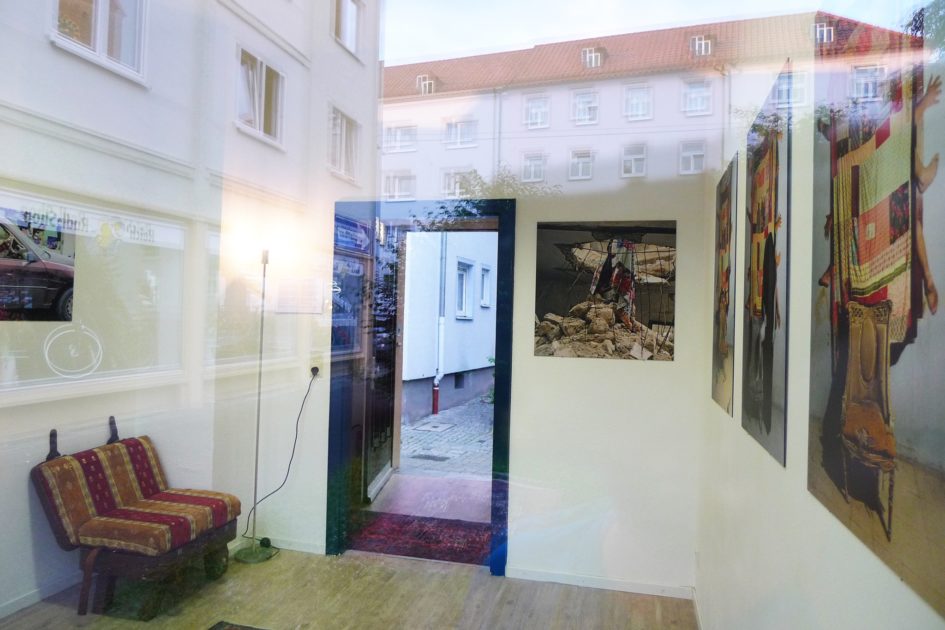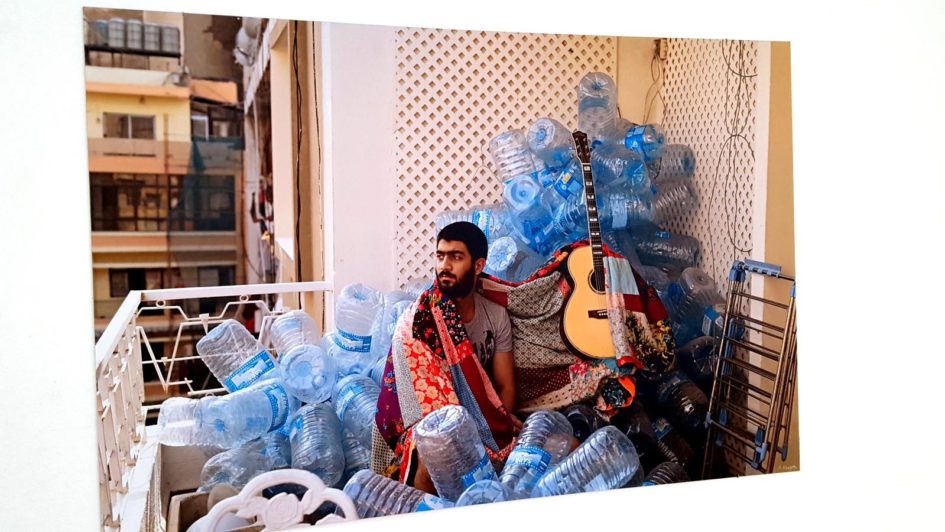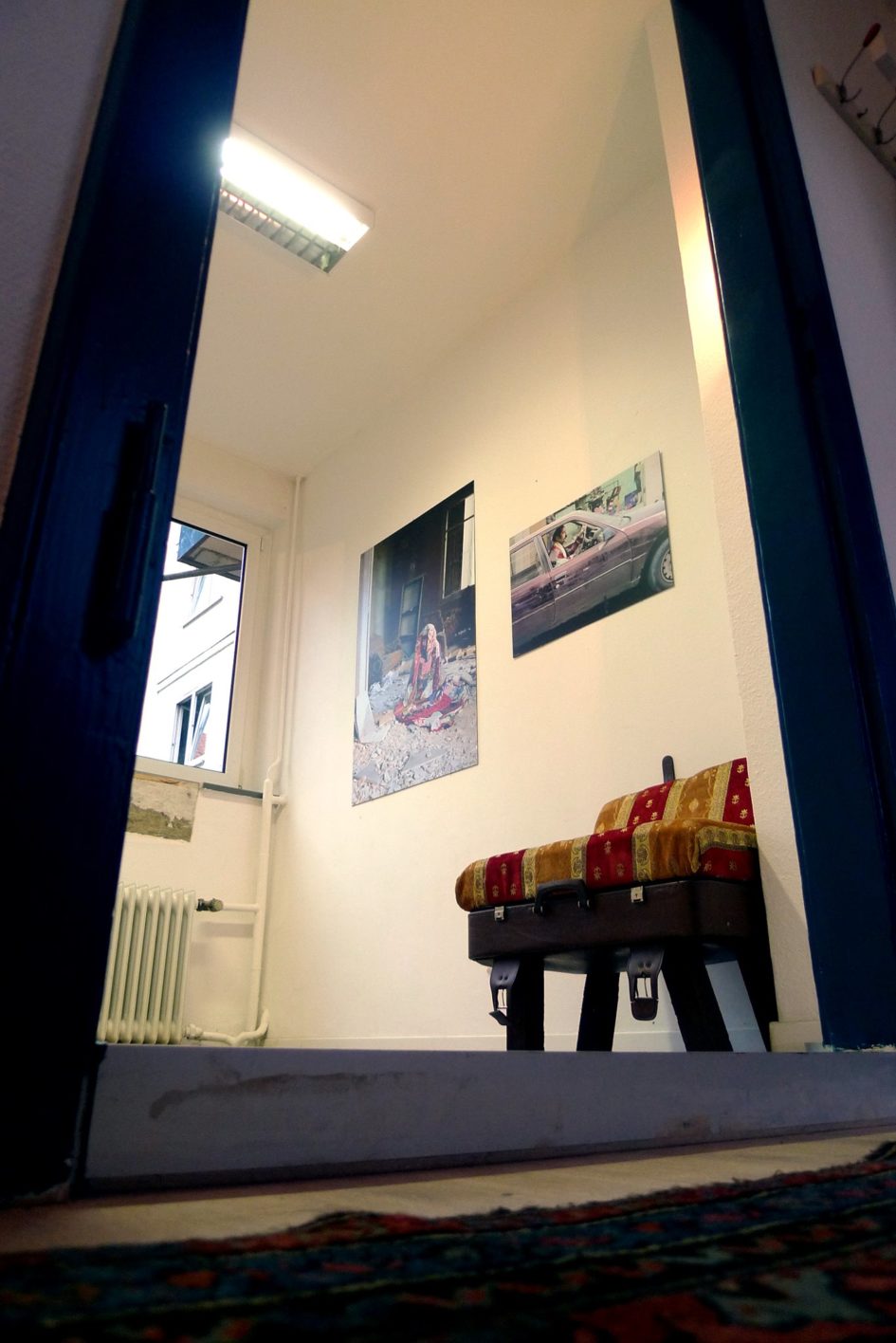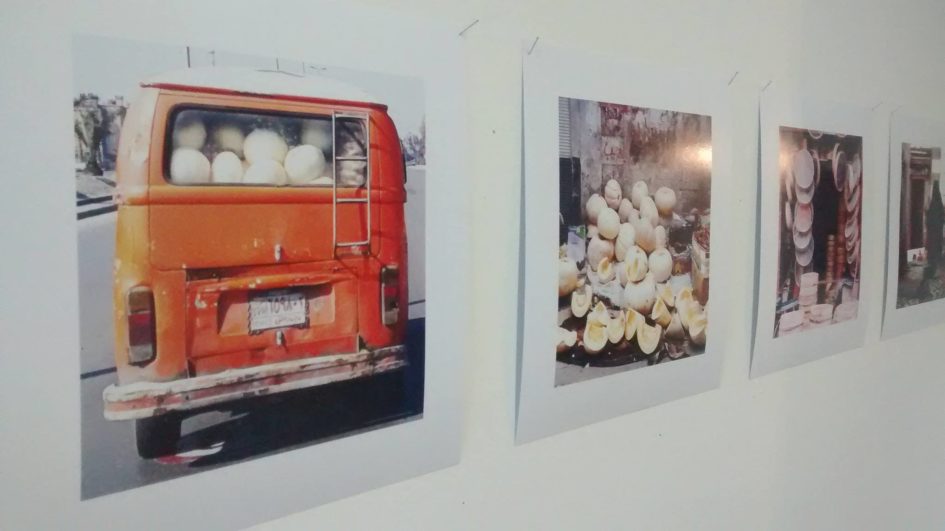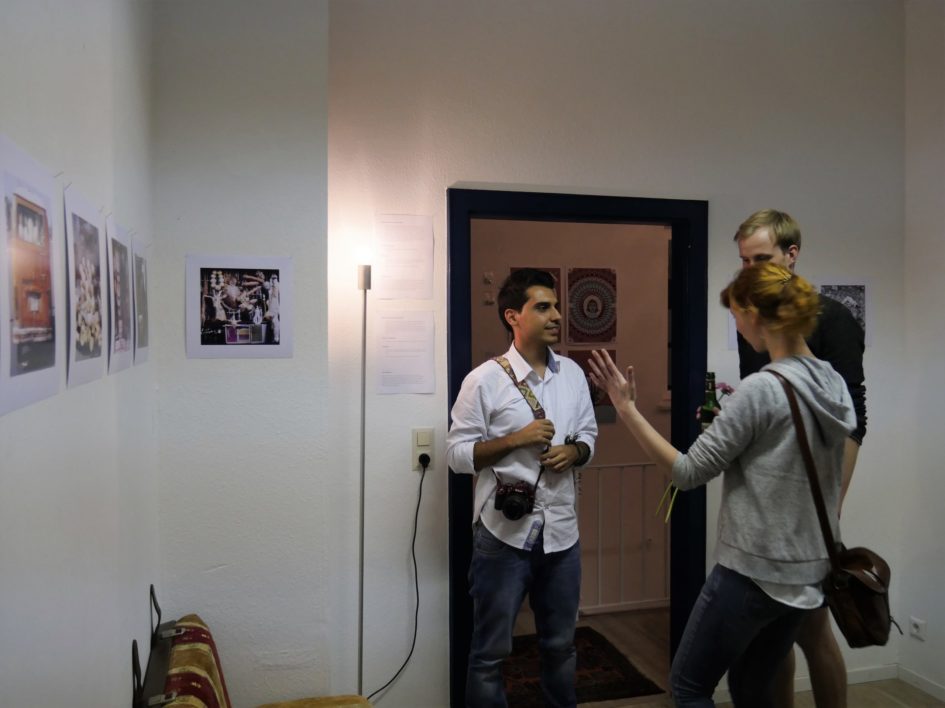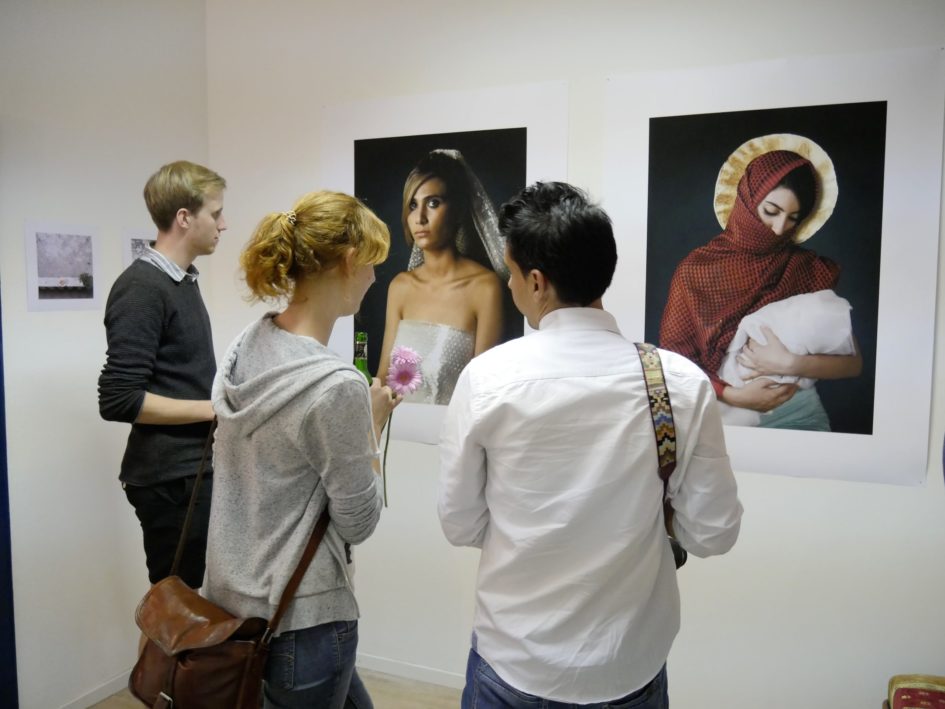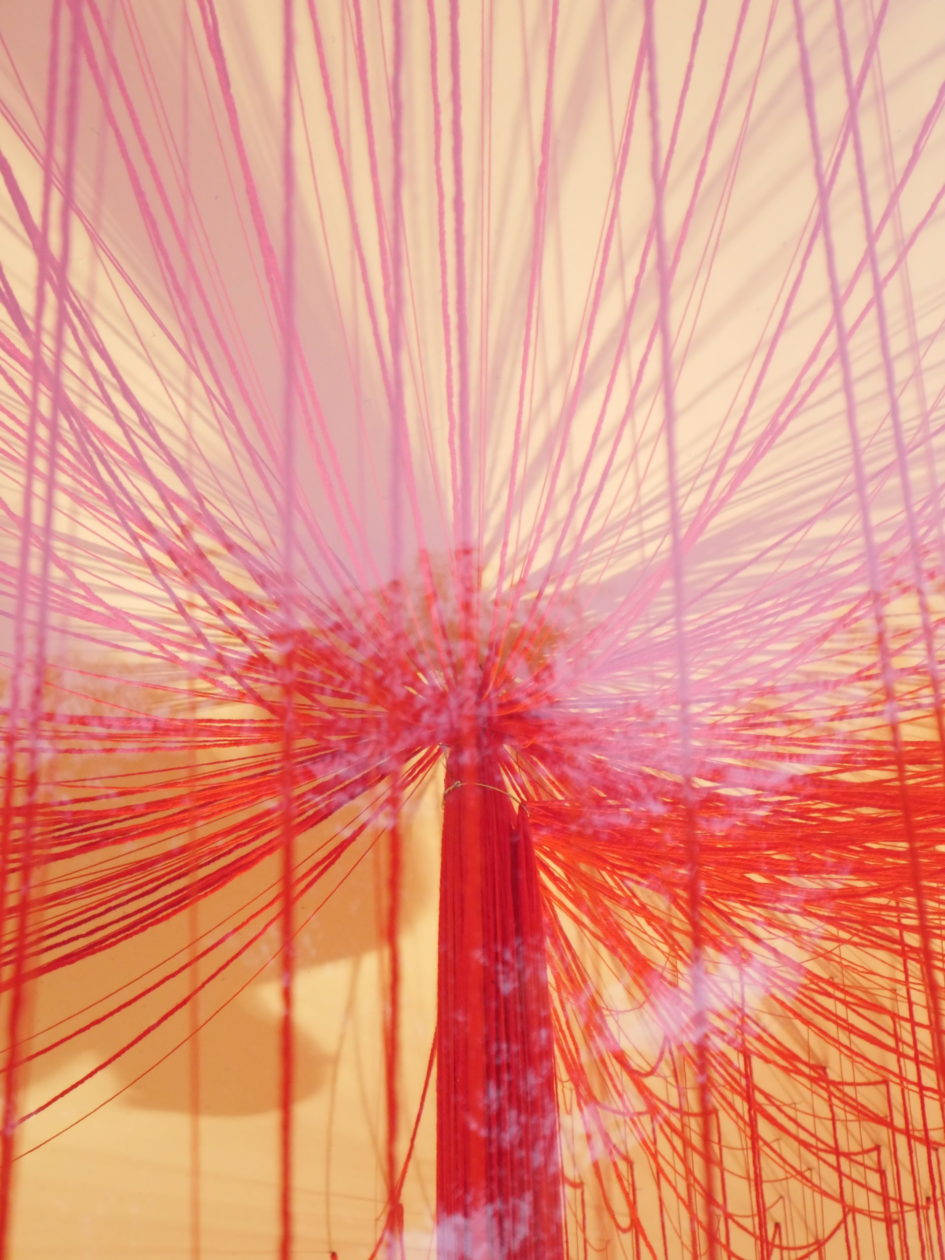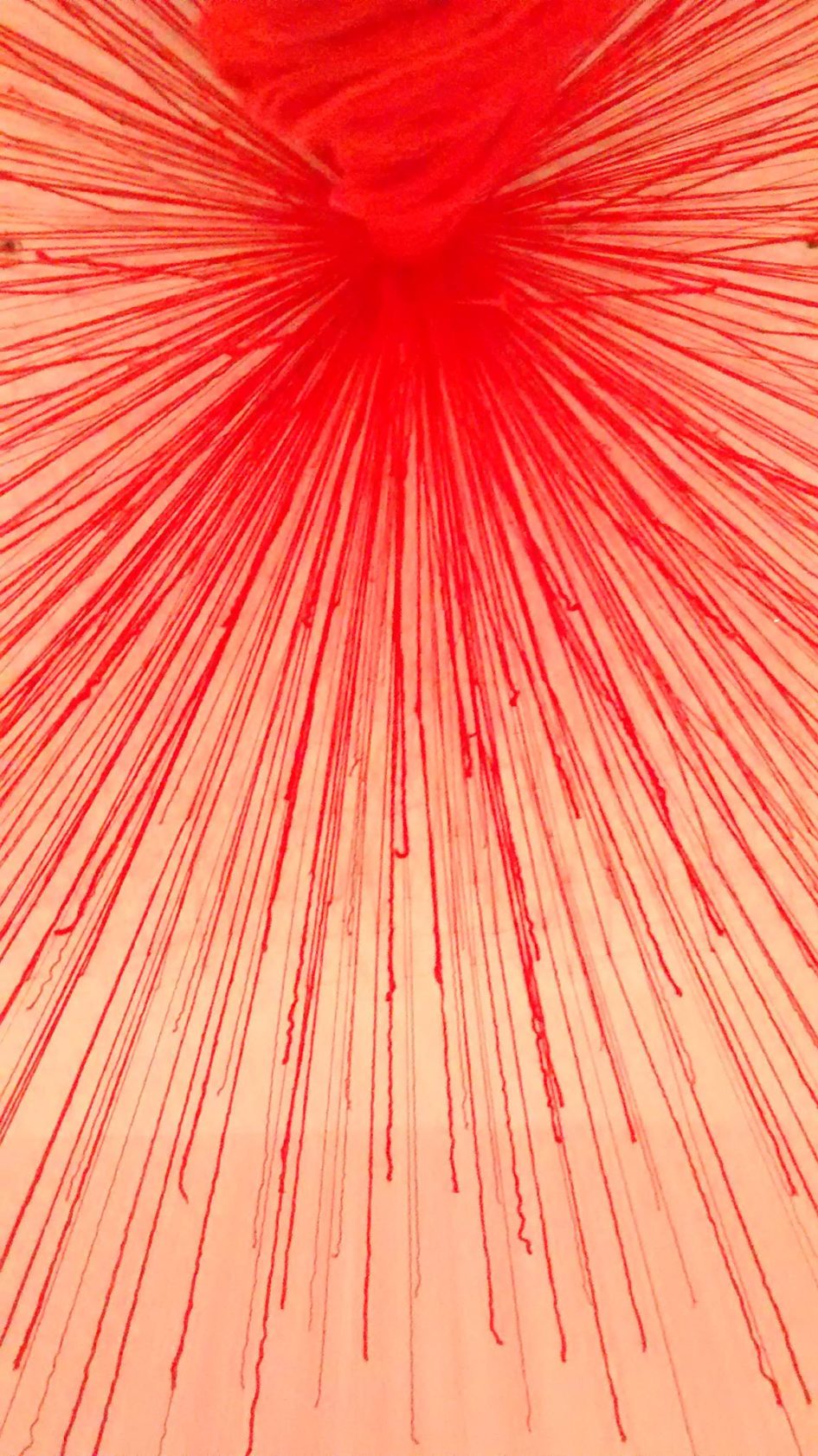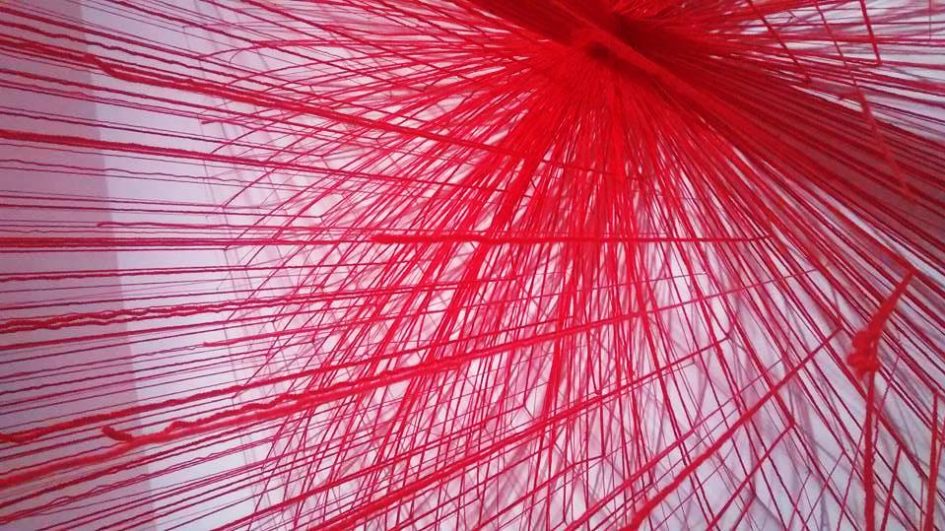Meeting point and link of contemporary art and culture.
Date: May – September 2016
Location: Ulm, Germany
Organisations: Griesbadgalerie (project space), Stiege (project space)
Role: Principal curator, concept, space- and graphic design, fundraising, organization, realization, public relations
Project Team: Petra Schmitt (co-principal curator, space-design), Tommi Brem (curator), Florian Hägele (technical support), Kathrin Häckert (photography), Cora Stegmann (support, design), Agnete Winter (support design)
Artists: Le Collectif Gémeaux, Mazen Kerbaj, Rima Najdi, Azadeh Akhlaghi, Wafa Hourani, Ayham Jabr, Otah Bashi & Ehab Hamsh, Kinda & Maya Ghannoum, Mohamad Khayata, Dani Hasrouni, Rami Bakhos
Collaborators: Collection Nadour Düsseldorf, Literatursalon e.V., Arab* Underground, Lichtfänger (film crew), Verschörhaus (maker space)
Partners: Stadthaus Ulm, Südwest Presse
Supporters: City of Ulm, City of Neu-Ulm, Federal State of Baden-Württemberg, Werndl printing, Portico Streetfood, Schariat Oriental Carpets, Trödelhaus Ulm, Susanne Banti
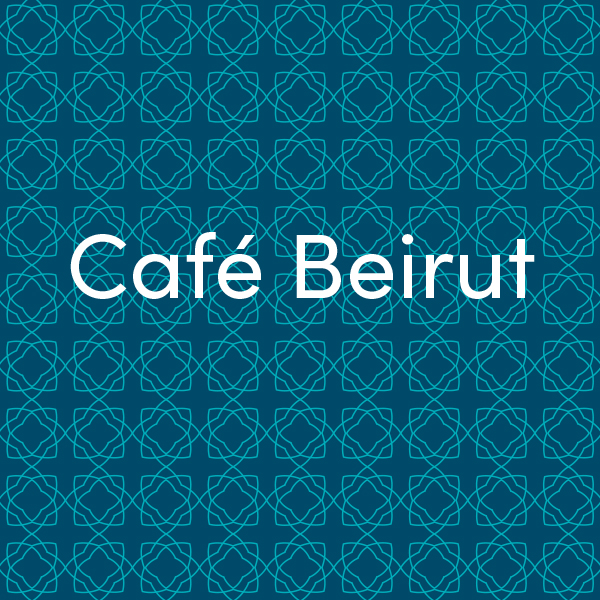
There is a striving scene of contemporary art and culture from Lebanon via Jordan to Iran. However, for us in central Europe, the Middle East is less known from this background as from political conflicts and violence. The project Café Beirut proposed a shift of perspectives. Café Beirut was a platform for current artistic positions as well as a meeting place. Moreover it was a connecting link between the visiting artists, the audience and the local cultural scene. The project remained flexible and dynamic which allowed it to develop in dialogue with the artists. The exhibition series took place at four sites, which were partly open in parallel: An empty 1050s store location that we transformed into a Beirut “Golden Age” style meeting and exhibition space, an Art Deco gallery, a city run Museum, and our project Space “Stiege”.
Café Beirut was based on the dynamics of exchange and mutual learning
Disorder(s) in Beirut, Le Collectif Gémeaux
Under the name “Le Collectif Gémeaux“, the cartoonist Michèle Standjofski (Beirut), the psychologist Laura-Joy Boulos (Montreal / Beirut) and the photographer Myriam Boulos (Beirut) showed their transdisciplinary project: Scenes of Beirut street life, photographically captured, reedited with drawing and psychologically commented. The project worked as a mix of thematic tour through different quarters of the chaotic metropolis and a reflection on the medical categorization of mental illness. Additionally, it was an occasion for conversations through which we could learn, collect and convey stories from our visitors who partly had roots in the Middle East.
As drawer Mazen Kerbaj (Beirut) approaches daily life in a state marked by conflicts – thereby always preserving a certain sense of humor. In his series “One Year Or SO”, he conveyed one year of his life in drawings, at least one per day. As experimental musician, Kerbaj pushes the trumpet as an instrument to its limits. In a live performance, the artist played an improvisation piece that he perpetuated through looping stations so that it ran as a sound installation throughout the 4 weeks exhibition. In the workshop „trumped is perfect for that“, he gave insight to his method of finding sounds and transforming them to music.
One Year Or So, Mazen Kerbaj
Verbe être: Passé/ Present/ Future, Rima Najdi
Rima Najdi hails from Beirut and lives in Berlin. The artist works mostly performative and often directly intervenes in public place in public space. Within Café Beirut, she created a public poster campaign reflecting on dynamics on social media after the attack on the magazine “Charlie Hebdo” in 2015. Nadia concluded that following the trend of “je suis…#, je ne suis…#”, ‘being…#’ or ‘not being…#’, one can be (or not be) too many different nouns and adjectives. The project was a poetic reflection about the coexistence of different and similar people, places and times and how all these overlap and can or cannot connect. Additionally, in her lecture performance “Confession #1”, Najdi showed excerpts from her ongoing project “Dress Me How You Like”, in which she questions media images and stereotypes about Arab women.
Azadeh Akhlaghi (Teheran / Melbourne) works conceptually with photography and film. In her photo series „By an Eye-Witness“, she reenacts undocumented scenes of death and assassination from the history of Iran prior to the Islamic revolution of 1979. Her fictive documentation is carefully composed and its aesthetic reminds of historical painting.
By an Eyewitness, Azadeh Akhlaghi
Qualandia 2087, Wafa Hourani
Wafa Hourani’s (Ramallah) work series Qualandia 2048, 2067 and 2087 depicts a fictive future of the refugee camp and checkpoint Qualandia between Jerusalem and Ramallah. The large scale models mark decisive points in a timeline created by the artists: The 100th anniversary of the founding of the state Israel, the Six-Day War and the first “Intifada”, the Palestinian upraise. In Ulm, Hourani showed Qualandia 2087, the final part of his series. The utopian vision overcomes the state of conflict and occupation with a symbolic and poetic transformation. Mirrors replace the border wall and antennae adorn the roofs of every home. Hourani uses photography as a medium that links real life and immagination. For example, if there is a closed window, the artist explains that you could take a photo, print it out and cut the window open. Beyond the visual sensation, the installation offers a multi-layered sensual experience using lights, sounds and smells. Moreover, Hourani added elements form each city that hosted the installation often in collaboration with locals. Thus, he creates additional links across cultures, ideas, reality and fiction. The work was loaned to the Griesbadgalerie by the Collection Nadour Düsseldorf.
Palmystery, Wafa Hourani
Wafa Hourani’s performance “Palmystery” relates the history and future of Palestine to the lines in our hands, something universally inscribed in the human body. Conflicts are often linked to the interpretation of history. A conflicting past makes a peaceful future hard to envision. Thus, the artist invented a mythological history of Palestine that is based on the art of reading the lines of the palm. An additional line on the palm connecting the line of life and the line of wisdom creates the geographical shape of Palestine. During the participatory performance, the audience was offered to get a palm reading by the artist. Moreover it was possible to become part of the work and have a line drawn or tattooed on the palm.
As project within the project, the “Syria Room” showed contemporary art by artists who were living and working in Syria during the civil war that had began in 2011. Curator Tommi Brem was in exchange with the artists through social media and organized the exhibitions remotely. He received print data for photographs and other reproducible works as well as instructions for a room installation.
Syria Room
Ayham Jabr, Damascus under Siege. Photo montages from science fiction imagery and street scenes in Damascus.
Wafaa Otah Bashi’s and Ehab Hamsh’s “The Crow Studio” is a collective of artists from different fields form visual art to illustration graphic design and marketing.
Mohamad Khayata was displaced from his home country. In his series “Stitching my Syria Back”, the artist used the traditional kilt “Madeh“ that he remembers form his childhood as an image for gathering pieces of memories form an idea of home that had become hard to grasp.
Dani Hasrouni who showed his photographic work was able to come to Germany through a scholarship and be on site for the opening of his exhibition.
Rami Bakhos created an installation for one of our rooms, consisting of several Kilometers of red yarn that we realized form his instructions.

